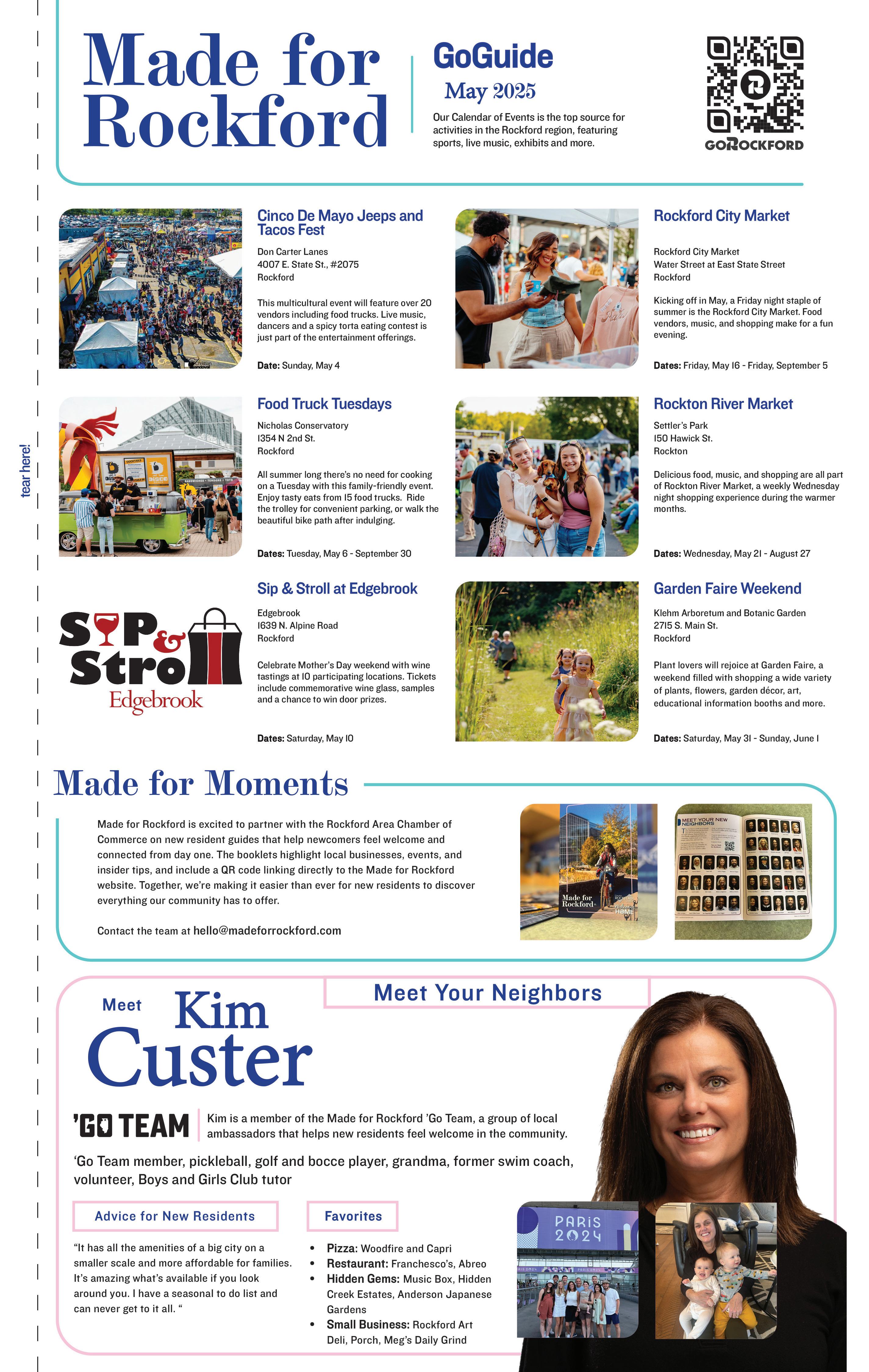
of the greater rockford business community


of the greater rockford business community
By Michael Dunn Jr., Region 1 Planning Council
From empty dirt lots to blocks of inviting, move-in ready homes, the Emerson Estates subdivision, located south of Auburn and Springfield Avenue, has seen a transformation over the last two years. The success of this development, led by Habitat for Humanity and set up by Region 1 Planning Council through our Land Bank, is a story of vision and partnership.
Possibilities
With construction halted by the housing crash in early 2000s, the Emerson
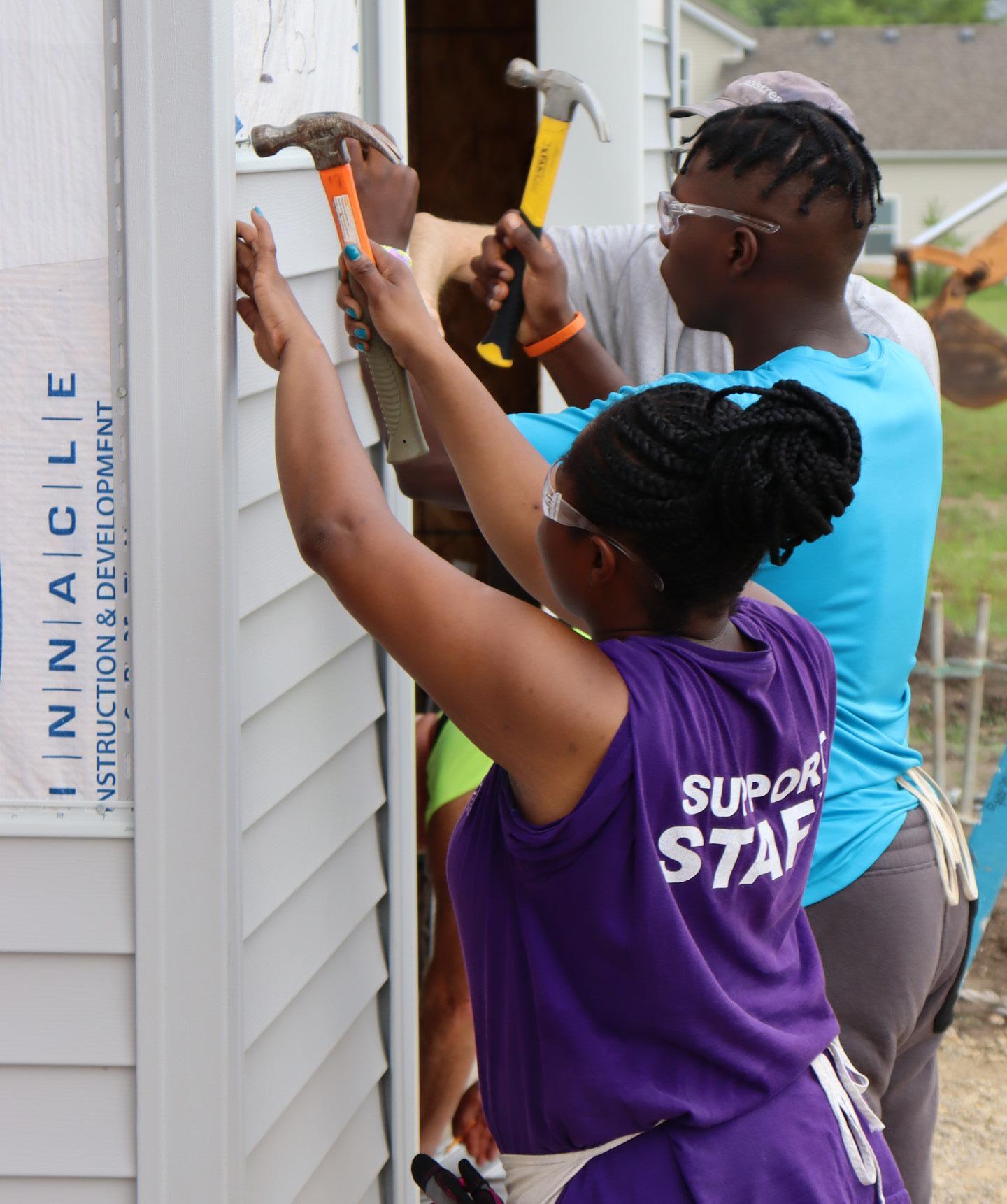
Estates subdivision lay forgotten. As part of R1’s mission to eliminate blight and return tax-delinquent properties back to tax-generating, productive use, we acquired 30 properties in this subdivision in 2022. We received them all in one lump purchase, cleared titles and the unpaid taxes, and positioned the land to be ready for a new owner.
“The Land Bank has the ability to clear liabilities, so another entity can
move forward with development, and we can provide land at a low cost so the project remains financially feasible. This location already had infrastructure in place—roads, sidewalks, utility lines, street lights—which kept development costs down,” said Eric Setter, director of community revitalization at R1.
The Land Bank scouted this group of properties as it looked at opportunities
(continued on page 8)
Celebrating our 2024/2025 Leadership Rockford graduates
By Caitlin Pusateri, Greater Rockford Chamber of Commerce
Last month, The Greater Rockford Chamber of Commerce honored 45 graduates from the 2024/2025 Leadership Rockford program in a special ceremony and brunch. Three members of the previous cohort who served as class moderators were also recognized.
The guest speaker, John Groh, president and CEO of GoRockford, encouraged graduates to use what they learned from the program to take meaningful action to create growth and change.
“Leadership is not about control or credit—it’s about stewardship. It’s about imagining more for our businesses and our communities and then doing the work to make it real,” he said. “Leadership
Rockford is more than a program. It’s an experience that opens your eyes to the many layers of our community, the challenges we face, and the strengths we share.”
Since its inception in 1967, Leadership Rockford (formerly CAP) has graduated more than 2,000 professionals. This year’s class marks the 70th cohort.
The 2024/2025 Leadership Rockford program was presented by Mr. Goodwater, with John Morrissey Accountants as the Bacon & Eggs Sponsor.
Registration for the 2025/2026 cohort is now available at rockfordchamber.com, but seats are limited.
(continued on page 12)

The Vital Signs of Healthy Business, Healthy Workforce
Thursday, June 26, 11:30 a.m. Illinois Bank & Trust Pavilion, 1868 Reid Farm Rd, Rockford
There is no health without mental health. As diagnoses of depression, anxiety, and substance abuse escalate, employers of all sizes struggle to understand the issue and respond appropriately to maintain a healthy workforce and workplace.
The Greater Rockford Chamber of Commerce has assembled a panel of local healthcare experts to demystify behavioral health and help employers foster wellbeing in the workplace. The panel will examine the realities of mental illness and share ways to promote a higher quality of life for your employees.
PANELISTS
Travis Andersen is the president and CEO of UW Health Northern Illinois, a regional division of UW Health, the integrated health system of the University of Wisconsin–Madison, serving communities in northern Illinois and southern Wisconsin.
Danielle Angileri is the executive director of the National Alliance on Mental Illness (NAMI) Northern Illinois, the nation’s largest, grassroots mental health organization dedicated to building better lives for the millions of Americans affected by mental illness.
Carlene Cardosi is the chief clinical officer for Rosecrance, a private, nonprofit organization offering behavioral health services for children, adolescents, adults and families, including comprehensive addiction services.
Jason Holcomb is the director of Community Impact at Region 1 Planning Council. He has worked in the community mental health and disability sector for many years and manages the day-to-day operations of the Winnebago County Community Mental Health Board.
Laura Kane is the founder and executive director for Marshmallow’s HOPE, a nonprofit dedicated to providing pro bono mental health support and suicide prevention resources for at-risk youth. She is a psychotherapist, specializing in evidence-based interventions to reduce suicide risk among youth.
Register by June 18:

My appreciation for the building and construction trades
By Angela Kay Larson, CEO, Greater Rockford Chamber of Commerce CEO PERSPECTIVE
I grew up in a 100-year-old farmhouse near Peoria, Illinois. My dad was an OG DIY-er, and my mom subscribed to Architectural Digest. He worked in the tool room at Caterpillar, and she tended to the home and family with the occasional odd job to make ends meet. That combination of skills, aspirations, and income meant that our house was a continuous remodeling project, and my parents’ crew of six girls learned to swing both crowbars and hammers.
We didn’t just remodel the bathroom; we moved it from one side of the house to the other. We didn’t simply update the kitchen cabinets; we tore out the backwall of the house and expanded the entire footprint. If my mom could sketch it on graph paper, my dad and us girls could bring it to life.
Hence, my appreciation for the building and construction trades.
I admire people who are trained and experienced at reading plans and following instructions to apply, assemble, build, construct, dig, erect, finish, install, maintain, repair, patch, replace, service— something. Whether buildings, bridges, roads, or some other structure, trades people know how to use their hands and
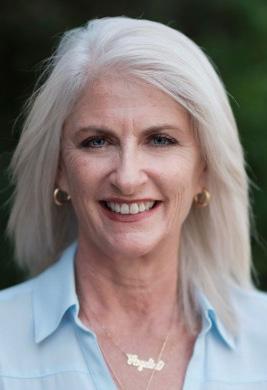
Angela
their brains to get work done. And at the end of the day, they can see the results of their labor.
Contrast that with those of us who spend our working hours, clicking the keys of a computer, attending meetings, and answering phone calls. Sure, we get work done too, but at the end of the day, we often don’t have tangible evidence of what we accomplished.
Earlier this year, Paul Nolley at Project First Rate invited me to attend the Building Trades Career Expo at the Plumbers & Pipefitters Training Center in Rockford. A dozen building and construction trade unions were there to introduce students and others to their work, skills, and apprenticeships. To accompany the exhibits, Project First Rate provided an Apprenticeship Guide that catalogs all the available programs, applications, and wage and benefit information.
I keep that catalog of building trades on my desk and occasionally flip through it. I can’t help but wonder what path I may have chosen if someone had asked 16-year-old Angela to put down her crowbar and browse through that catalog. A girl can dream. v
By Mark Tichgelaar, The Alternative Board of Rockford
To better support its members, the Greater Rockford Chamber of Commerce (GRCC) is instituting strategic roundtable sessions to address issues of concern identified in the quarterly Business Sentiment Survey.
The roundtables will be professionally facilitated by The Alternative Board of Rockford and will offer members the opportunity to discuss topics identified as concerns or barriers to growth.
Based on results of GRCC’s Q1 Business Sentiment Survey, topics will include:
Exit strategy and succession planning – Many business owners wait too long before initiating an exit plan, not realizing the complexity and time involved. Unfortunately, 80% of small businesses end up not selling.
Market advantage and competitiveness – Do you understand what your competitive advantage is or the value your product or service compared to your competition? Survey respondents identified this as a barrier to growth.
AI for small business – AI has captured a lot of buzz recently, and rightfully so. But how do small businesses take advantage of AI without departments to research and leverage it?
The Illinois Defense Manufacturing Consortium (ILDMC) is a partnership comprised of the Nathalie P. Voorhees Center for Neighborhood and Community Improvement at University of Illinois Chicago (UIC), the Quad Cities Chamber of Commerce, the Chicago Metro Metal Consortium, the Greater Peoria Economic Development Council, the Greater Rockford Chamber of Commerce (GRCC), and the Illinois Manufacturing Excellence Center. ILDMC was established to help defense manufacturers in these communities adapt to DoD program changes, expansions, and cutbacks. ILDMC services include:
• Hands-on support in areas such as workforce development, cybersecurity, supply chain resilience, and innovation.
• Studies and reports on economic conditions in ILDMC regions and the economic impact of defense spending in the state.
• A tracking tool to monitor the defense manufacturing supply chain in the state.
The Rockford Region will host the ILDMC Consortium quarterly meeting in June at the GRCC offices. Consortium partners will discuss emerging trends, supply chain innovation, workforce development, and aligning opportunities that will position Illinois manufacturers for long-term success in the defense sector.
For more information on the ILDMC visit illinoisdefense.uic.edu.
The roundtables work similar to a mastermind session. A group of business leaders gather to help each other solve an issue and offer advice based on our collective experience. A participant will be selected to be the advisee and asked to describe their situation to the group:
• What’s at stake? Revenue, people, customers, products, or future?
• What is an ideal outcome? What do you want to see accomplished?
• What is the current status? What have you tried? What has worked for you?
• What help do you need from the advisor participants?
At that point, we will ask clarifying questions to make sure there are no ambiguities. Once everyone is comfortable that assumptions are clarified, we move on to the advice portion.
Based on their knowledge and experience, each advisor offers a unique idea and solution. Once the advisors have offered their recommendations, the advisee will share their action plan based on the advice given.
At the conclusion, the facilitator will share additional insights on the topic. We can then compare to see if there are other things to consider. Participants will leave energized and more confident in what steps to take next.
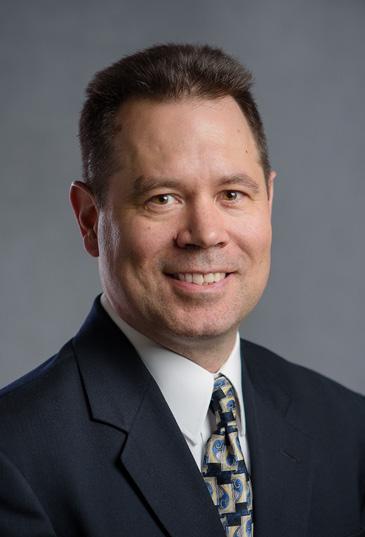
Mark Tichgelaar is owner of The Alternative Board of Rockford and a certified business coach with 30 years of leadership experience. He has an MBA with executive education in strategic planning and leadership from Kelley School of Business, Yale School of Management, and the Center for Creative Research.
Thank you for reading the VOICE, the region’s only print and digital newspaper dedicated to business news and information. This month’s editorial focus is on Construction, Built Environments, and Infrastructure newsworthy topics due to their impact on quality of life and economic development in our region. We also give a nod to National Small Business Week, May 4-10, and Economic Development Week, May 11-17. And last but certainly not least, we celebrate the graduates of the 2024/2025 Leadership Rockford class. Look out world, here they come!
— Christine Hand, managing editor
Upcoming editorial themes for the VOICE
June – Healthcare and Wellness
July – The Business of Sports
Aug – Celebrating the 815
Visit rockfordchamber.com/the voice for advertising information, editorial calendar, and article submission guidelines.
Seven reasons why you’re not using it but should be
By Laura Pierce, Irontek Beloit
For many remote workers, entrepreneurs, and freelancers, finding the right place to work can be a challenge. If you’re growing weary of the at-home distractions or the struggles of trying to focus in a loud coffee shop, a coworking space might be just what you’re searching for.
Here are seven reasons why you may not be using a coworking space—but why you should definitely consider trying it out.
You haven’t experienced the community vibe
Sure, coworking spaces are for work. They’re also thriving communities where professionals come together to support one another, collaborate, and inspire. Many spaces offer networking events, workshops, and mixers that keep members connected and allow for ideas to be shared. Instead of working in an isolated environment, you’ll be part of a dynamic ecosystem that fosters success. You think the local coffee joint works just fine
Your go-to café has great lattes, and the barista knows just how you like your coffee. But it also has unreliable
Wi-Fi, limited seating options, and loud conversations. Coworking spaces offer a professional and productive place to work, meant to keep you focused. Plus, many of them provide coffee or extra perks like snacks and beer on tap!
You aren’t aware of the amenities
It’s not just about desks and chairs at coworking spaces. Many have high-speed internet, conference rooms, printing, and mail services. You may even find that some have podcast studios, business mentoring opportunities, and other resources to help you grow your business.
You think it’s too expensive
Many coworking spaces offer membership options that fit a variety of needs and price points. If you’re looking for a desk for a day or want your own office, there’s an option that works for you and your wallet. With the money you’ll save on coffee, Wi-Fi, and office supplies, it’s a worthy investment. You think you work better alone
While you may be productive, working alone can be a bit isolating. Coworking spaces offer quiet areas for when you need to focus and communal

areas that cultivate collaboration. The mix of like-minded people around you can boost your motivation and inspire you to feel more creative and engaged.
You haven’t checked out the space
If you haven’t toured a coworking space, you’re missing out. Many are modern and stylish while being functional and welcoming. A visit to one might just change your mind about where you prefer to work.
You don’t know about the extra perks
Beyond office necessities, some coworking spaces offer 24/7 access, social events, and educational programs. Other unique perks could include guest speaker series or discounts at local businesses. Having a place that supports your

professional development and personal well-being can make all the difference. Coworking spaces aren’t just offices with free coffee and snacks. They’re energetic hubs of productivity, creativity, and opportunity. It doesn’t matter if you’re growing a small business or working remotely, coworking can offer a place for you to thrive while connecting you with like-minded professionals. If you’ve never tried coworking, consider taking a tour or signing up for a day pass. You just might realize it’s the right fit for your work style and career goals.
The views expressed are those of the author(s) and do not necessarily represent those of the Greater Rockford Chamber of Commerce.
Laura Pierce is the director of Irontek, a coworking space and startup hub on the Ironworks Campus in downtown Beloit. Irontek supports entrepreneurs and remote professionals with flexible workspaces, amenities, and a vibrant community of nearly 200 members—driving innovation, collaboration, and economic growth in the Stateline area.

By Haddon Anderson, Stateline Youth For Christ
A nonprofit’s approach to a construction project involves unique considerations. This year, our team at Stateline Youth For Christ began the construction of a new youth center on Charles Street. We learned a lot and think the following might be transferable principles for other nonprofits that are endeavoring a similar building project.
Location, location, location
This old mantra is critical for a nonprofit to consider too. We asked this guiding question when evaluating locations: What is the best location to continue our mission, increase accessibility to our programs, and best reach our target market? When we found a prospective location, we pursued a thorough evaluation process involving leaders in our organization, board members, and other community members, each bringing diverse insight and critical skills into the process. This analysis uplifts healthy stewardship and results in a well-informed decision on a strategic location.
For our project, we knew it was critical to be positioned within proximity of local schools to increase accessibility for local youth. It took years to discern options and ultimately land on what we consider a slam-dunk location near East High School and Lincoln Middle School.
Champions as partners
Expertise is great, but passion among the key teams involved in construction
made a big difference in helping our project go smoothly. Our team values project partners who believe in our mission and are genuinely excited about this project. From our architect (Zach Enderle of 1919 Architects) to general contractor (Ringland-Johnson), we have experienced champions of our mission who see the unique potential for this project to transform young people’s lives. When everyone in the boat is rowing in one direction, we move faster and more efficiently as a cohesive team. Our advice is to pick vendors that catch the vision to make the rest go smoothly. Mission-driven communication
In the age of marketing overload through email and social media platforms, it’s difficult to get information in front of people and garner their attention. A construction project, however, provides an unprecedented opportunity for a nonprofit to share their project with the general public and catalyze their mission forward. Communication with stakeholders and the community is critical to create excitement surrounding your project using multiple forms of communication. Cover the basics including frequent broad communications via newsletters and social media updates. Additionally, key leaders should not only share directly about the project’s vision with major donors, but they should also welcome thought leadership and visionary ideas from such supporters.
Nonprofits should also consider appropriate and timely connections with news outlets, especially regarding milestone events such as a groundbreaking event or grand opening. Prepare your key leaders to be interviewed with key messages and concise talking points.
Seek wise counsel
Find people who have “been there and done that.” Such a development for a nonprofit is exciting but it’s also daunting. It presents challenges that will stretch the organization’s leadership and board. It is easy (and expected) for nonprofits to have blind spots in the process.
We soaked up wisdom from a variety of experienced leaders and sought their counsel regularly. We have received guidance in many areas including budgeting, project task management, security, technology, etc.
Consult your board
Make sure part of your counsel comes from board members, who you have kept regularly informed about the project. It will be incredibly challenging to tackle a construction project of magnitude without collaboration within your organization. Invite board members into the journey and welcome their expertise.
Monitor change orders
Be very clear with your construction partner with regards to your budget.

Most nonprofit organizations lack the funds to handle unexpected and sometimes costly change orders. If you don’t really need something, feel free to say no. No one should be offended. A good construction company will review all change orders with a representative from your organization and will require signatures in order to move forward with changes.
Build excitement
Passion for the project within your team is critical, as execution is going to take sacrifice and big effort. Your team needs to understand how this building will fit into your purpose and values and how it will propel your organization forward.
There’s much more to say about a nonprofit’s approach to a construction project. But hopefully, this provides a solid foundation. Strategize over location, identify champions as partners, communicate, engage news outlets, bring your board on the journey, monitor change orders, and get your staff excited about this new endeavor.
And more than anything, do not pursue this alone. Seek wisdom through wise counsel. Become a “sponge” in soaking up as much insight as possible. Embrace this posture and watch your construction project flourish.
The views expressed are those of the author(s) and do not necessarily represent those of the Greater Rockford Chamber of Commerce.

By Elizabeth Nardi, Rockford University
The recent 2024 Economic Impact Study, conducted by Rockford University’s Institutional Research team and the Region 1 Planning Council, highlights the university’s extensive influence on the regional economy, demonstrating how its operations, student spending, and visitor activity support local prosperity.
A significant economic contributor
The study found that Rockford University generates between $78.3 million and $133.5 million in total economic benefits. This impact stems from the university’s operational expenditures, student spending, and visitor expenditures. For every $43.3 million RU directly spends, the regional economy sees an amplified effect.
A strong return on investment
Higher education remains a key factor in economic mobility and is still considered one of the best investments an individual can make. The study found that regionally RU alumni earn between 15.3% and 19.1% more over their lifetimes than those with a high school diploma or an associate degree. This translates into an additional $1.8 million in regional personal income annually per graduating class. These earnings not only improve individual financial stability but also enhance overall consumer spending power within the local economy, benefiting businesses across various industries.
A major employer and investor
Rockford University is a significant employer in the region, providing jobs for 282 faculty and staff members. With a payroll of $11.7 million in the 2023-2024 academic year, RU directly supports hundreds of households regionally. Additionally, the university invested $20.2 million in operations, facilities, and contracts, bolstering local businesses and service providers. These investments demonstrate RU’s ongoing role in supporting regional economic sustainability.
Strengthening the local workforce
RU plays a vital role in workforce development, helping local businesses access skilled talent. Approximately 62% of RU graduates remain in the region,
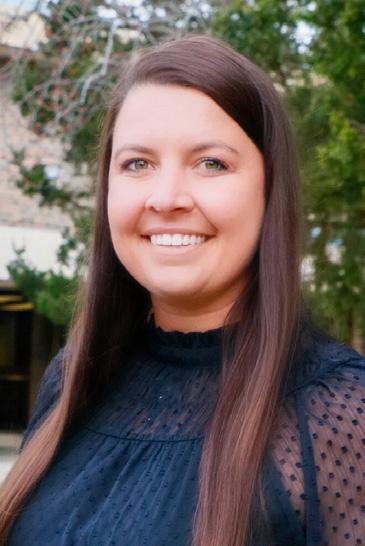
contributing to workforce stability and business growth. The university supports 687 jobs, either directly or indirectly, and has helped retain or attract 859 residents. Additionally, 38% of RU’s student body comes from outside the four-county area, enhancing the region’s talent pool.
Visitor spending
RU also contributes to the local economy by attracting nearly 9,000 visitors annually for athletic competitions, performing arts, and campus events. These visitors generate $1.31 million in direct spending and up to $1.44 million in total regional impact, benefiting hotels, restaurants, and retail businesses. The influx of visitors helps sustain local enterprises and increases demand for services.
The broader impact
The study also examined a counterfactual scenario showing what would happen if RU were not part of the regional economy. Without the university, the Rockford Region would see an estimated loss of 780 jobs and 814 residents, along with a $61.7 million decline in GDP. Conversely, an expansion scenario analyzed an increase of RU’s full-time enrollment to 1,500 students could add 106 jobs, 135 residents, and $10.8 million in GDP, further enhancing economic stability and growth.
Continued growth
The university’s contributions to workforce development, business investment, and community enrichment position it as an indispensable asset to the region. Supporting RU’s ongoing growth is an investment in Rockford’s economic future—one that yields dividends for businesses, residents, and the next generation of professionals.
For businesses, community leaders, and policymakers, these findings underscore the importance of sustained collaboration with educational institutions such as Rockford University. Our success is deeply intertwined with the prosperity of the region, making RU a vital partner in shaping a thriving economic landscape.
The views expressed are those of the author(s) and do not necessarily represent those of the Greater Rockford Chamber of Commerce.




By Alyssa Thompson, City of Loves Park
The East Riverside Boulevard/I-90 corridor is the primary gateway into Loves Park from the east, serving residents, commuters, tourists, and business traffic locally, regionally, and nationally. Over the past few decades, strategic public investment and comprehensive community planning have resulted in billions of dollars in private investment along this corridor.
In 2009, a $30 million project was completed that widened East Riverside Boulevard and the tollway ramps to two lanes in each direction and upgraded nearby roads. In the same year, the Illinois Tollway completed a $180 million project to widen I-90 through the Rockford area. This made it easier for businesses to deliver goods and receive supplies, and for residents to travel, making Loves Park more attractive to business and residential growth.
The corridor has become a major center of the region’s growing sports tourism and hospitality industry, with the Rockford Park District Sportscore Two drawing more than three million visits since 2022. In 2016 the Rockford Park District expanded the Sportscore Two footprint, which included a 133,000-square-foot addition to its Indoor Sports Center, five new multipurpose fields, and improvements to its Wedgbury Stadium to attract higher-level sporting events. This public investment resulted in private development in hotels, restaurants, retail centers, and other businesses along the East Riverside Boulevard/I-90 corridor.
In 2019, retail giant Costco opened in Loves Park. The City of Loves Park invested $1.7 million in infrastructure for Costco and future retail development, ensuring ease of access and safety for visitors. The development of Costco signaled the commercial strength of this corridor and the City of Loves Park to investors. Costco receives two million visits per year at the Loves Park location.
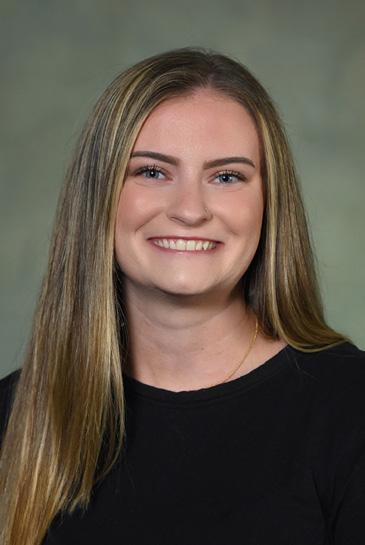
In addition to Costco, the $485 million Javon Bea Mercyhealth hospital, across East Riverside Boulevard in Rockford, opened in 2019. The hospital adds significant traffic to the area, increasing sales tax revenue, new business development, and residential demand.
A new stepping stone for mixeduse development, Riverside Commons represents the City of Loves Park’s commitment to shaping a vibrant, future-focused destination along Riverside Boulevard and I-90. This growing commercial corridor plays a key role in the City’s broader strategy to promote growth in business, housing, entertainment, and mobility. It’s also part of a larger effort to establish an entertainment district around Mercyhealth Sportscore Two and Rivets Stadium, transforming the area into a regional hub for both residents and visitors. More than just a development project, Riverside Commons reflects a shared vision—crafted in collaboration with local community members and stakeholders—to create a dynamic space that enhances quality of life and positions Loves Park as a premier destination in the region.
The East Riverside Boulevard/I-90 corridor exemplifies how infrastructure investment and strategic planning can catalyze economic growth for a community and region. Through strategic public and private investment, the corridor has been transformed into a center for commerce, healthcare, recreation, and community. Its development reflects a replicable model for regional planning that prioritizes both economic vitality and the quality of life for residents, visitors, and businesses alike.
The views expressed are those of the author(s) and do not necessarily represent those of the Greater Rockford Chamber of Commerce.
Alyssa Thompson serves as the marketing and communications specialist for the City of Loves Park. She leads strategic initiatives to inform, engage, and connect the community through creative messaging, branding, and public outreach. Her work supports transparency, fosters civic pride, and highlights the vibrant spirit of Loves Park.
developers, and civic leaders discuss housing challenges in the region
By Christine Hand, managing editor
It’s no secret that the Rockford region is at a pivotal moment in housing and development. At a recent forum facilitated by the Region 1 Planning Council (R1), local realtors and developers discussed the needs and challenges shaping the area’s residential landscape. Business and civic leaders from Rockford and nearby municipalities also participated in the event, asking questions and sharing feedback.
Michael Dunn, executive director of R1, set the stage by outlining the organization’s long-term approach. As a federally funded planning entity, R1’s mandate is to envision what northern Illinois will look like 30 years from now, and then work backward to address present-day needs in transportation, economic development, and—crucially—housing.
“Industry isn’t going to choose us as a growth area—whether they’re expanding or relocating—without a healthy housing market and a good living environment for their workforce,” Dunn said.
Connor Brown, CEO of the Northwest Illinois Alliance of REALTORS®, said the heated housing market isn’t limited to Rockford but extends throughout the broader region, citing some striking data: In Stephenson County, the average home cost in the first quarter of this year reached $167,000, up from $71,000 in 2021—a testament to both increased demand and rising home values.
However, this rapid appreciation brings challenges. Affordability and access to lending remain significant hurdles, especially for first-time buyers and those with moderate incomes.
Brown also noted the issue of high demand and low supply. “The only things making people move right now are life events. That’s it,” he said. “So, unless you’re dying, unless you can no longer live in your home, unless you’re getting divorced, unless you are relocating for a job, you’re not moving. And that has created quite the logjam.”

Ron Clewer, Illinois market president for Gorman & Company, underscored the importance of addressing the full spectrum of housing needs—from affordable and workforce housing to high-end market rate units. He clarified a common misconception: “Affordable housing simply means you’re not going to spend more than 30% of your income on housing and housing-related expenses… whether you’re making $12,000 a year or $300,000 a year.”

In Rockford, the area median income is about $63,000, and housing needs span from those earning well below that figure to those above it.
Clewer also pointed out that the stigma around affordable housing often stems from outdated models of public housing, which don’t reflect the diverse and modern approaches now being implemented.
Clewer mentioned a recent study that found roughly 40% of the cost of multifamily construction is due to bureaucratic regulations and restrictions. “That includes state-level issues, IRS-level issues, local zoning codes, and county requirements,” he said.
But local governments in the Rockford region are taking steps to curb some of those costs. Brown cited several initiatives:
• Boone County’s moratorium on impact fees.
• The City of Rockford waiving permit, sewer, and water hookup fees.
• A three-year property tax rebate program, coordinated with local school districts and taxing bodies.
Other municipalities are reviewing zoning ordinances— such as setbacks, lot sizes, and allowable footprints—to reduce the upfront costs of new construction and make it more attractive for developers to build a variety of housing types.
Despite these efforts, significant barriers remain. Oliver Emerson of Oliver Emerson Development, a local developer with deep ties to Rockford, described the challenges faced by small and minority developers, particularly the difficulty of securing upfront capital for pre-development costs like architectural fees. Grants and public support are essential, but delays in funding can stall projects and create uncertainty.
Emerson also highlighted the importance of community engagement and overcoming “not in my backyard” (NIMBY) attitudes. Successfully siting new developments often requires building trust and demonstrating the long-term value of projects to local residents. Timing is another critical factor, as market conditions and the availability of public incentives can shift rapidly.
The panel also discussed the trend of repurposing historic and underutilized buildings in downtown Rockford. Emerson’s latest projects involve converting the Trekk building at 124 North Main into loft apartments and the old watch factory at 325 S. Madison St. into market-rate apartments, leveraging historic tax credits and working with federal agencies like HUD. These projects not only provide new housing but also contribute to downtown revitalization and the preservation of Rockford’s architectural heritage.
The consensus among participants was clear: The region’s future growth depends on an immediate, coordinated, multi-faceted approach to housing and development.
“If we’re not building now, we’re going to miss it,” Brown said. “We have the land, the community will, and the opportunity. Now we just need to scale.”
The collaborative spirit between business, government, and organizations like R1 and the Greater Rockford Chamber of Commerce bodes well for the region’s ability to tackle the housing challenge. v
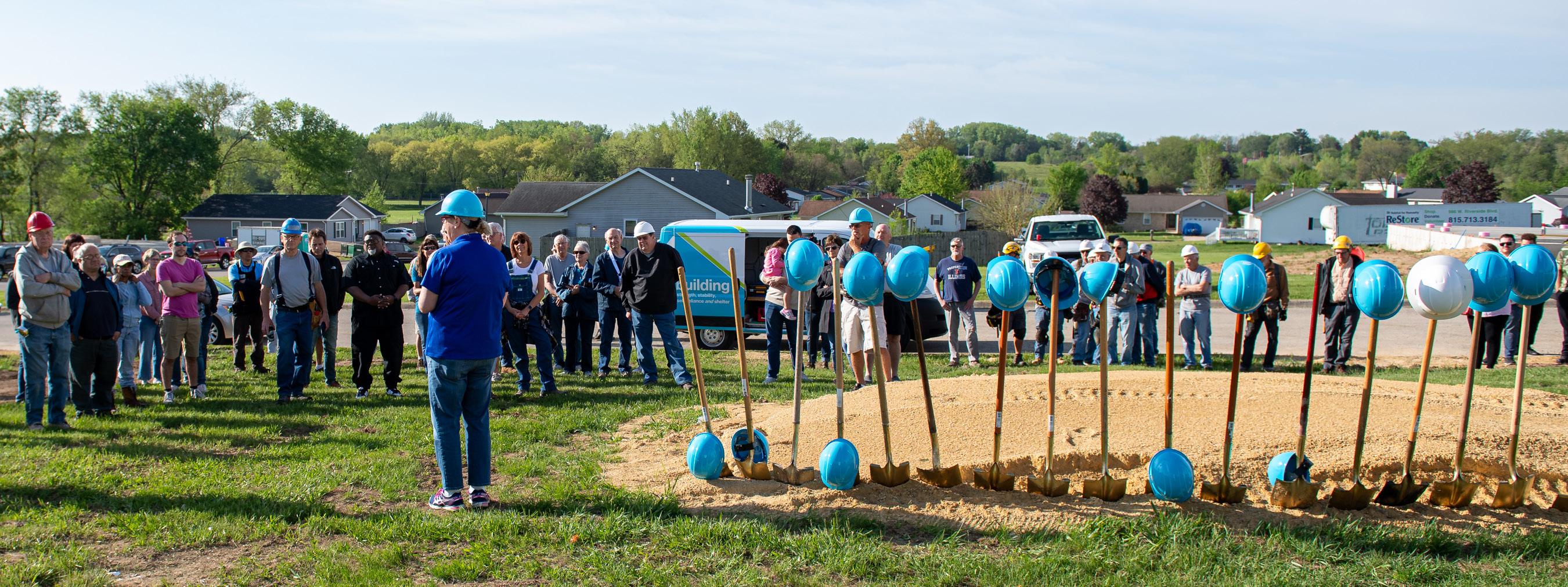
for new construction on the west side of Rockford. Keri Asevedo, executive director of the Rockford Area Habitat for Humanity, was top of mind when it came to who could mobilize and construct homes quickly. Although R1 and Habitat worked together before, a project of this scale was a first for both.
“I told Eric ‘I want to build a community,’” Asevedo said. “He put the work in to find the right way to do it and finally found the perfect project—the batch of 30 properties at Emerson Estates. Now 30 families will live here and thrive.”
Four families have already moved into their Emerson Estates houses. Seven homes are complete, with closing to take place by the end of summer. Three more homes will be built in the fall, with the remaining 16 to be completed in the coming years.
It is a large-scale example of how Land Bank partnerships with communityoriented nonprofits like Habitat result in development with more impact than what either could do on their own.
“This project is a perfect example of what’s possible when we work together with a shared vision for our neighborhoods,” Rockford Mayor Tom McNamara said. “Through the Land Bank’s ability to secure abandoned properties and the city’s strong partnership with Habitat for Humanity, we’re not just building affordable homes, we’re reducing
blight, revitalizing blocks, and investing in Rockford’s future.”
Through Habitat for Humanity, applicants receive zero-interest loans with no down payment, making homeownership a reality for economically marginalized households.
“Statistics show that affordable homeownership transforms lives,” Asevedo said. “Twelve monthly mortgage payments can change their credit scores by 100 points or more, allowing them to obtain credit without using predatory lenders.”
One of the first Emerson Estates residents was Tori Turman, a paraprofessional at Easter Seals Academy. A first-time homeowner, Turman had a direct hand in her own transformation. She put in 200 hours of sweat equity in constructing her own home and participated in financial education classes. If it wasn’t for Habitat, Turman says she would have rented for the rest of her life, making it more difficult for her to get ahead.
Unique to the Emerson Estates subdivision and keeping with Habitat’s mission of affordability, the first six houses are piloting the use of geothermal energy. And all homes receive electricity from a nearby community solar field. By relying solely on electric power,

particularly from renewable sources, residents can save up to 50% on monthly electric bills.
Habitat also partnered with Rockford Public Schools District 205 to provide high school juniors and seniors with practical construction experience in framing, drywall, and everything in between. Some students went on to use those skills in permanent employment with contractor partners.
At R1, we are exceptionally proud of the support we provided to Habitat and the residents of Rockford through the Emerson Estates project. Keri, her team, the Habitat Board of Directors, and all of the Habitat volunteers who worked hard and gave their time to this project, created a success story that has garnered national attention. We are grateful for the impact Habitat has made in our community and the partnership they have with us at R1. Additionally, Frank Wehrstein of Dickerson & Nieman deserves a lot of credit for helping our Land Bank.
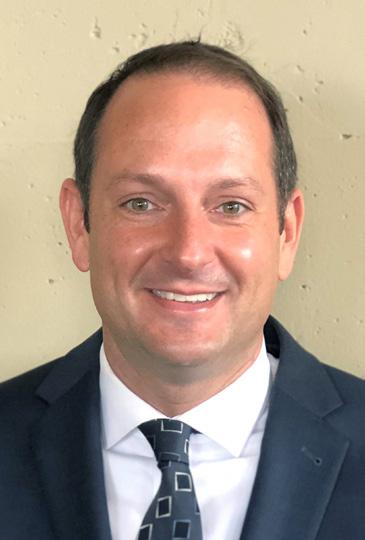
The success of Emerson
provides a long list of benefits to the community:
• Adds 30 new affordable-rate houses for families.
• Eliminates unsightly blight and reduces sprawl.
• Creates the first energy-efficient neighborhood powered by renewable energy.
• Combines expertise from a variety of groups—volunteers, schools, construction companies—for a large-scale community effort.
• Provides stability for economically marginalized households.
Habitat wins. Students win. Employers win. Neighborhoods win. Taxpayers win. And most importantly, families who are now first-time homeowners win.
The views expressed are those of the author(s) and do not necessarily represent those of the Greater Rockford Chamber of Commerce.
Michael Dunn Jr. is the executive director of Region 1 Planning Council, a multi-jurisdictional entity that focuses on transportation, infrastructure, economic development, housing, and community health on behalf of local government.
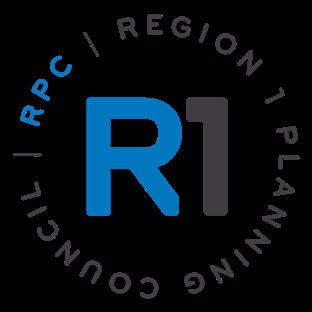


See how GRCC’s Q1 Business Sentiment Survey compares to key national results
The MetLife and U.S. Chamber of Commerce Small Business Index (SBI) was conducted Jan. 28 – Feb. 14, 2025. The Ipsos poll surveyed a sample of 755 small business owners and operators from the continental U.S., Alaska, and Hawaii. Small businesses are defined in this study as companies with 500 or fewer employees that are not sole proprietorships.
Q1 highlights compared to previous U.S. Chamber of Commerce SBI surveys:
• Optimism about business health and cash flow declined.
• Views of the U.S. economy are stable.
• Inflation concern at record high.
• Revenue concerns rise.
• Small businesses look for leadership experience in entry-level employees.
• Trade schools viewed as best in prepping workers.
• Small businesses believe their entry level employees are prepared.
• Gen Z and millennial businesses lead on planned pay transparency.
Local responses vs. national responses to key issues

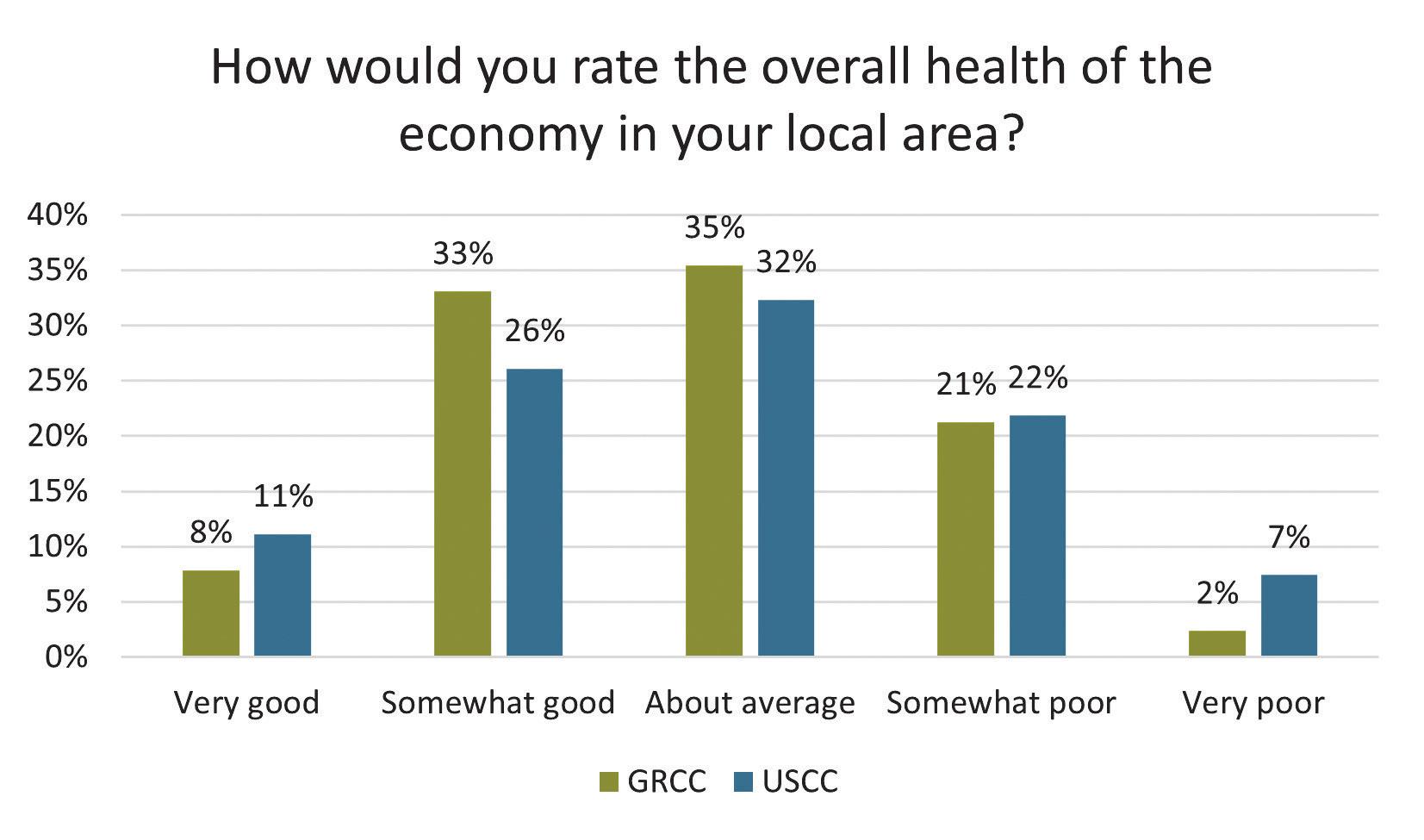

The following is a comparison of key results between the Greater Rockford Chamber of Commerce Q1 2025 Business Sentiment Survey and the U.S. Chamber of Commerce Small Business Index for Q1 2025.
Compared to the SBI results, businesses in the Rockford Region were more optimistic about the U.S. economy than their national counterparts, but they are less likely to increase investment in their company in the year ahead. A majority of respondents in both surveys consider the overall health of their business to be above average.
Visit uschamber.com/sbindex/summary to see a complete summary of the U.S. Chamber’s Small Business Index.
Visit rockfordchamber.com/resources/business-sentiment-survey-results to see the complete results of GRCC’s Q1 Business Sentiment Survey.

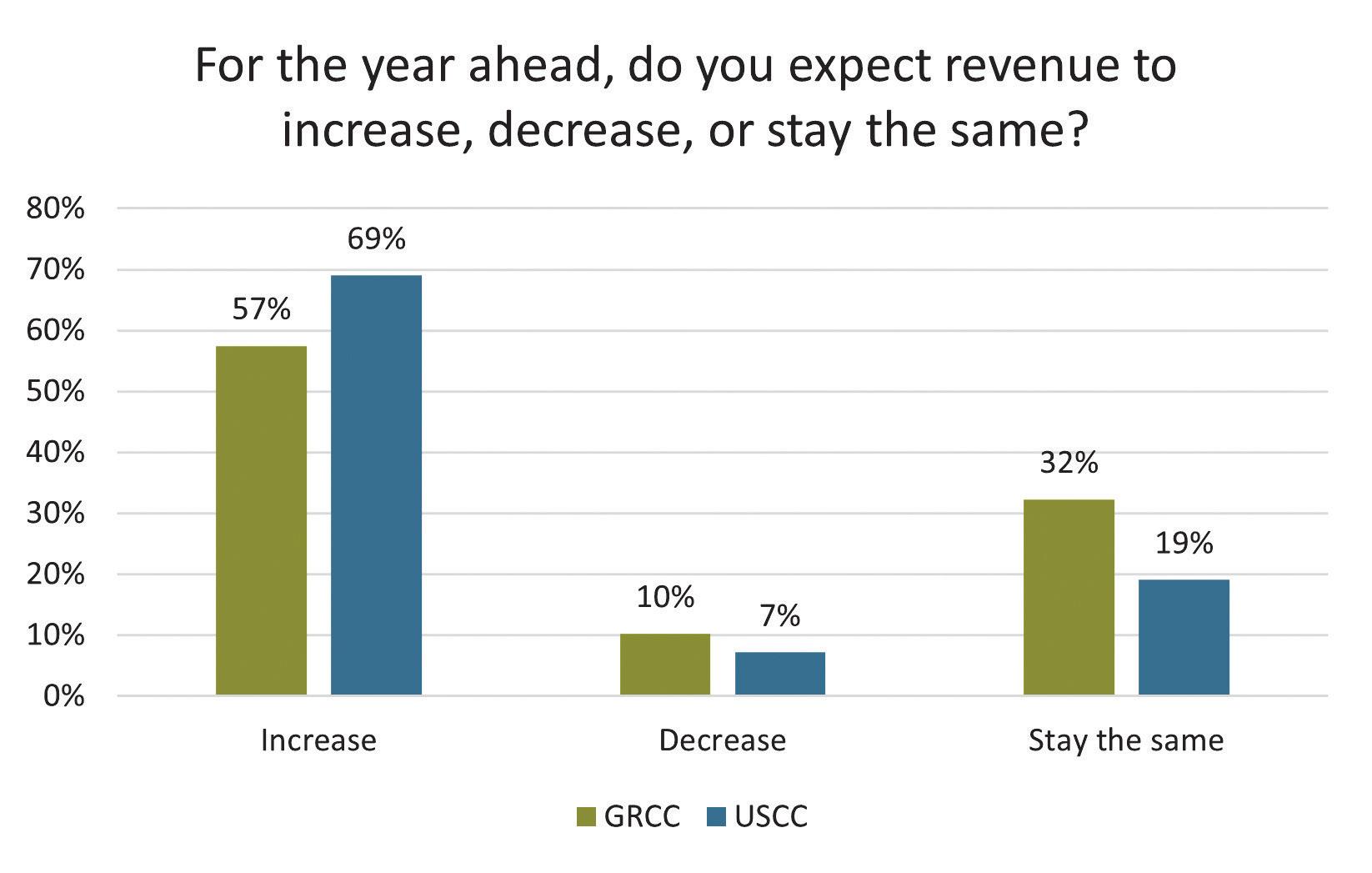
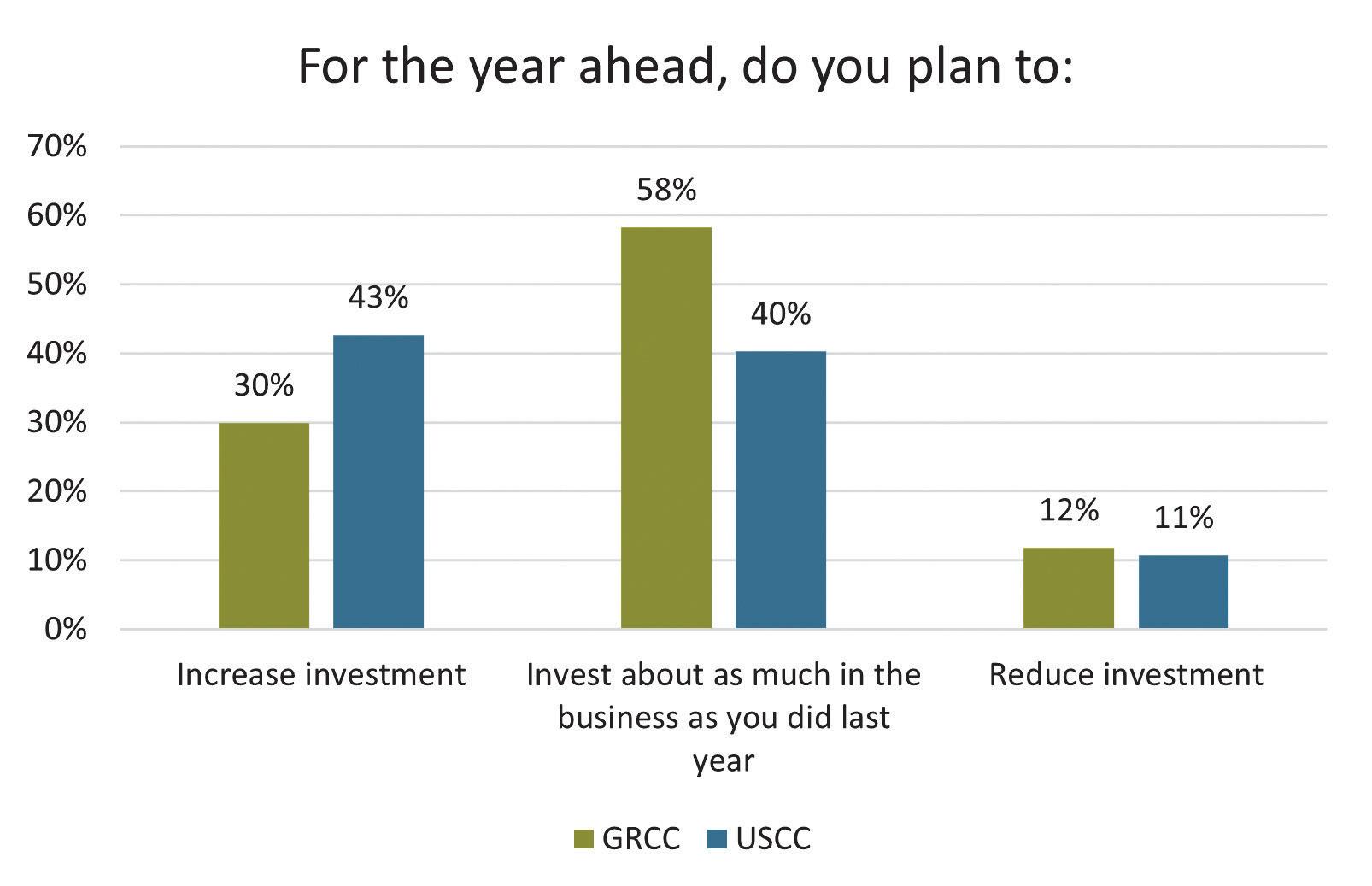

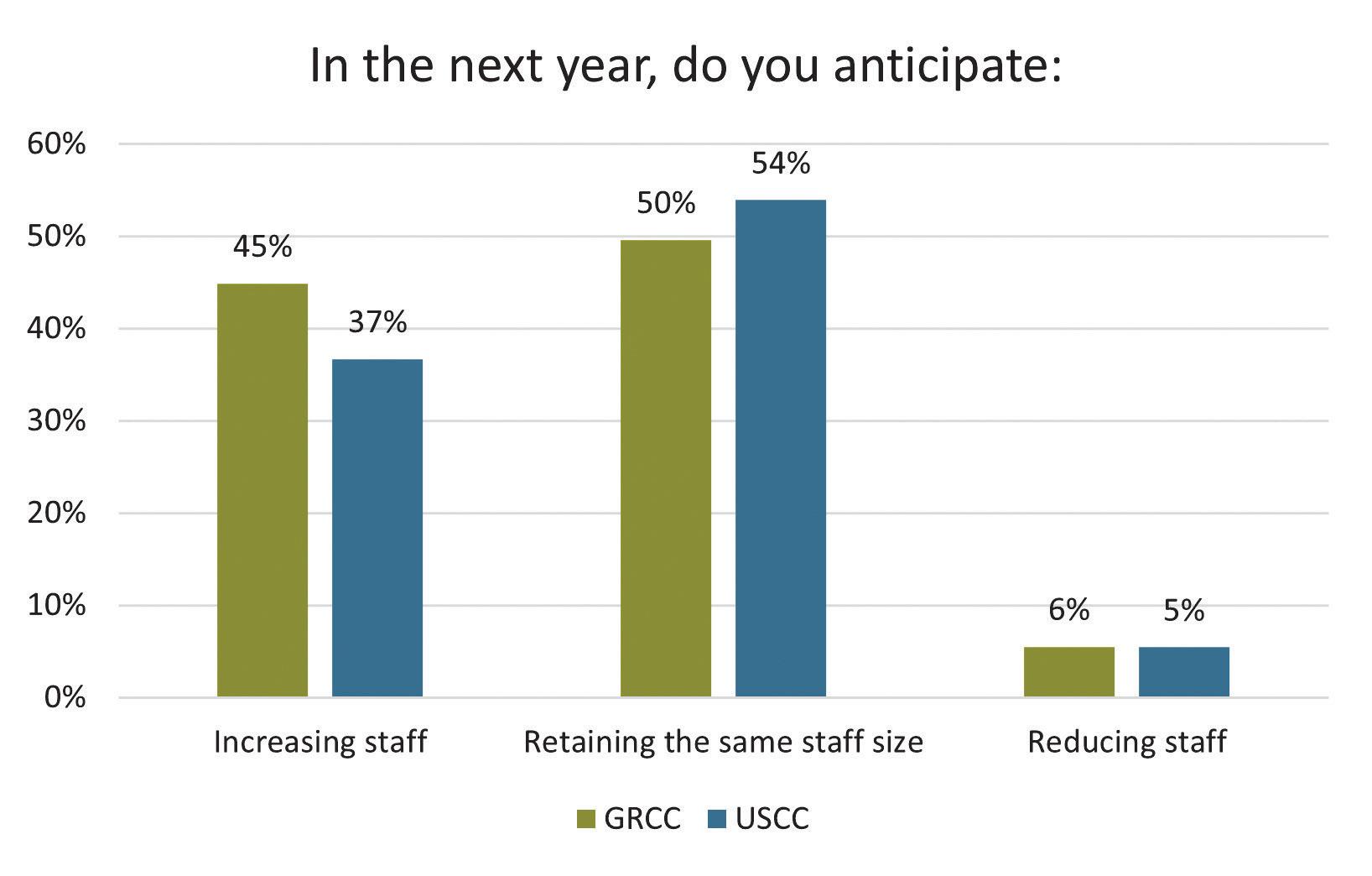

GRCC’s Business Sentiment Survey is conducted quarterly to track trends and contrast results. Each quarter, GRCC will share the results of the local survey, along with key comparisons from the U.S. Chamber of Commerce SBI conducted during the same time period.
The Q2 survey is scheduled to begin June 2, so keep your eyes peeled for that email. The more people who spare the 10 minutes to take the quarterly surveys, the more valid and useful the results will be.
If you are not a member of the Chamber but would like to participate in the survey, please email info@rockfordchamber.com.

Special thanks to presenting sponsor, Mr. Goodwater

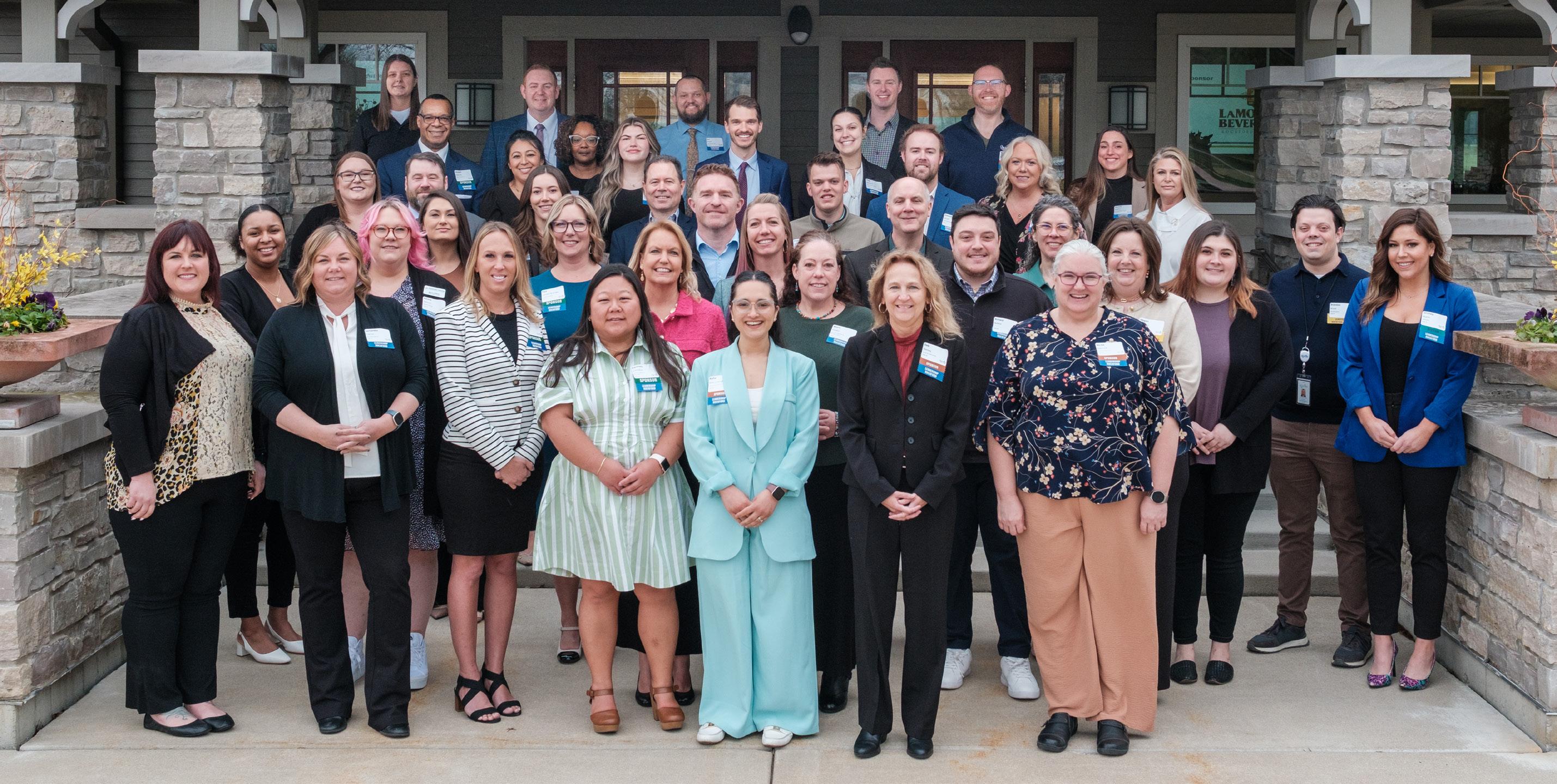
GRCC is proud to recognize our Leadership Rockford graduates and the companies that support their professional development
Barb Aaby, UW Health
Gina Adams, University of Illinois Extension
Katy Anderson, Collins Aerospace
Danielle Angileri, The National Alliance on Mental Illness (NAMI) Northern Illinois
Nicole Babcock, Larson & Darby Group
Christina Betancourt, Rock River Valley Blood Center
Richard Butera
Chris Callender, Sjostrom & Sons, Inc.
Samantha Ciaccio, Byron Bank
Andrew Copeland, Miller Engineering Company
David Costello, Rockford IceHogs
Deb Dorsey, Larson & Darby Group
Wendell Edwards, WTVO ABC17/ WQRF FOX39
Sarah Farwick, Allen Galluzzo Hevrin Leake, LLC
John Gleason, Anderson Japanese Gardens
Danielle Glenn, Porter Pipe & Supply Co.
Aneta Gromski, Rockford Community Bank, A Wintrust Community Bank
Owen Hultman, CoyleKiley
Lisa Jimenez, Collins Aerospace
Shazma Jones, Midland States Bank
Angela Kay Larson, Greater Rockford Chamber of Commerce
Shana Lovato, Goodwill Industries of Northern Illinois
Patrick Lundquist, UW Health
Whitney Martin, Rockford Area Convention & Visitors Bureau
Heather Metcalf, Hughes Recruiting & Consulting
Alexander Meyer, Reno & Zahm LLP
Aisha Moe-Lindvall, WilliamsMcCarthy LLP
Jackie Moen, Porter Pipe & Supply Co.
Nate Nelsen, Collins Aerospace
Abby O’Rourke, Savant Wealth Management
Susan Parker, Rock River Valley Blood Center
Kaleb Price, i3 Broadband
Asa Rowan, OSF HealthCare Saint Anthony Medical Center
Aurora Schnorr, Rockford Promise
Michaela Seay, Manpower
Jen Sisson, Stillman Bank
Jamie Stephans, LaMonica Beverages
Mark Tichgelaar, The Alternative Board of Rockford
Dallas Traser, Savant Wealth Management
Tara Vanden Branden, Rockford University
Courtney Vossekuil, Spherion Staffing & Recruiting
Kinsey White, The National Alliance on Mental Illness (NAMI) Northern Illinois
Paige Witherow, Region 1 Planning Council
Gene Young, Hard Rock Casino Rockford
Michael Zielinski, Rockford Symphony Orchestra
2024/2025 Moderators
Rita Bravo, Winnebago County States’ Attorney’s Office
Brandon Kruse, City of Rockford
Megan McIntire, Savant Wealth Managemen
2025/2026 Moderators
John Gleason, Anderson Japanese Gardens
Heather Metcalf, Hughes Resources
Whitney Martin, GoRockford
Kaleb Price, i3 Broadband
Thank you to the organizations that provided tours:

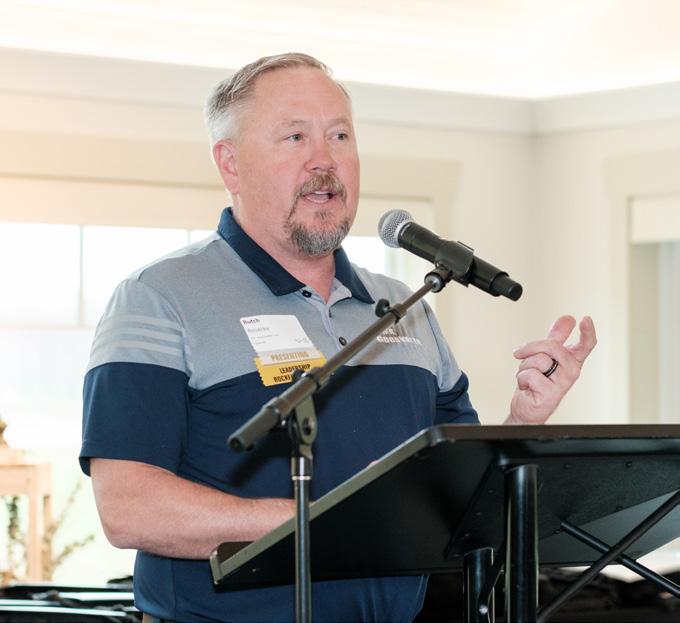
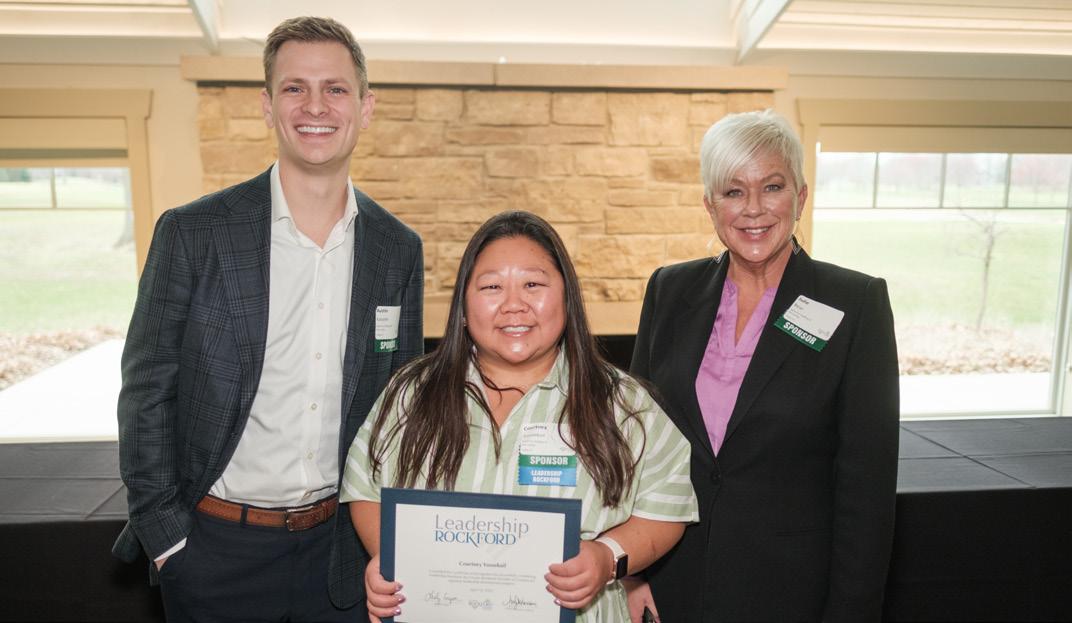
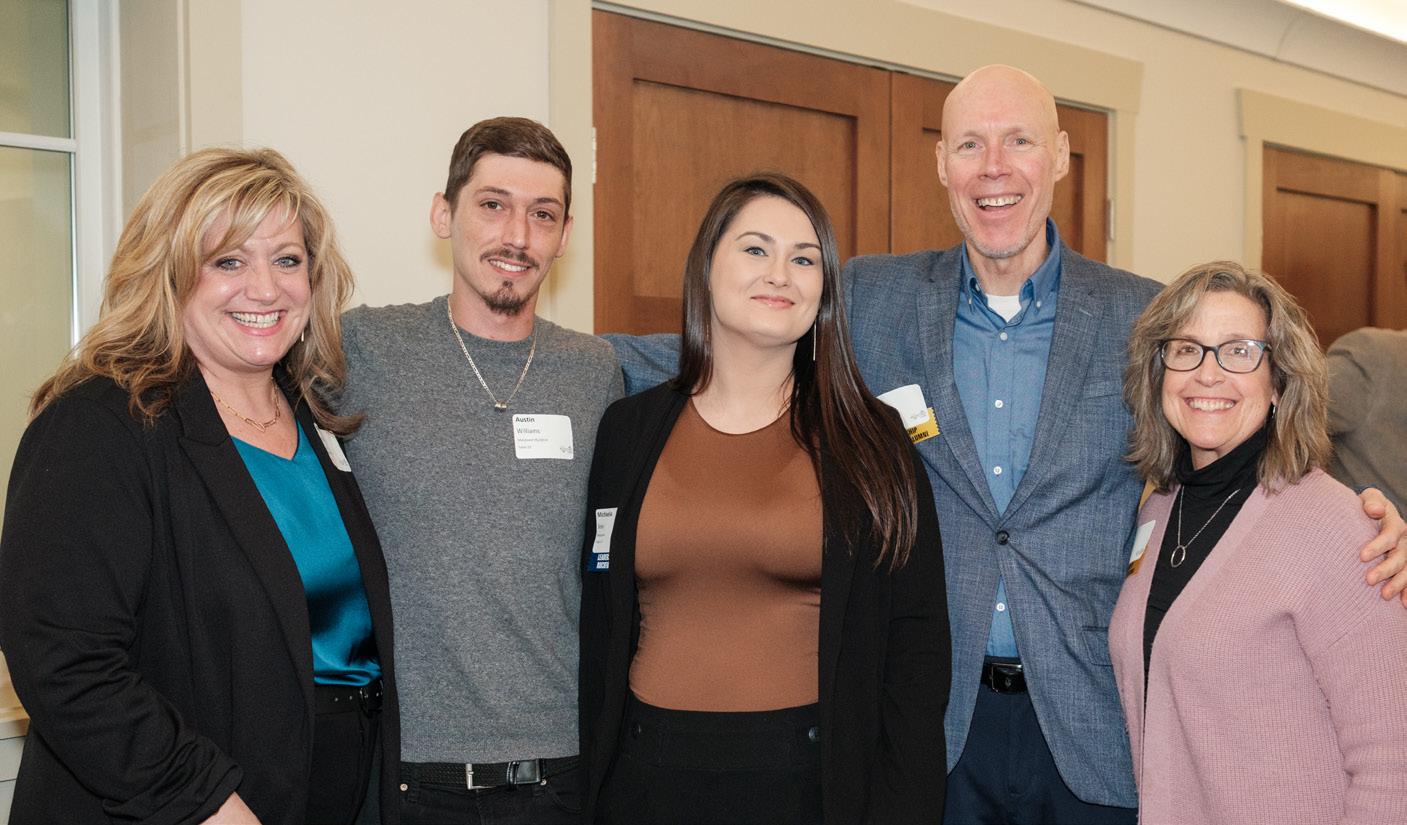
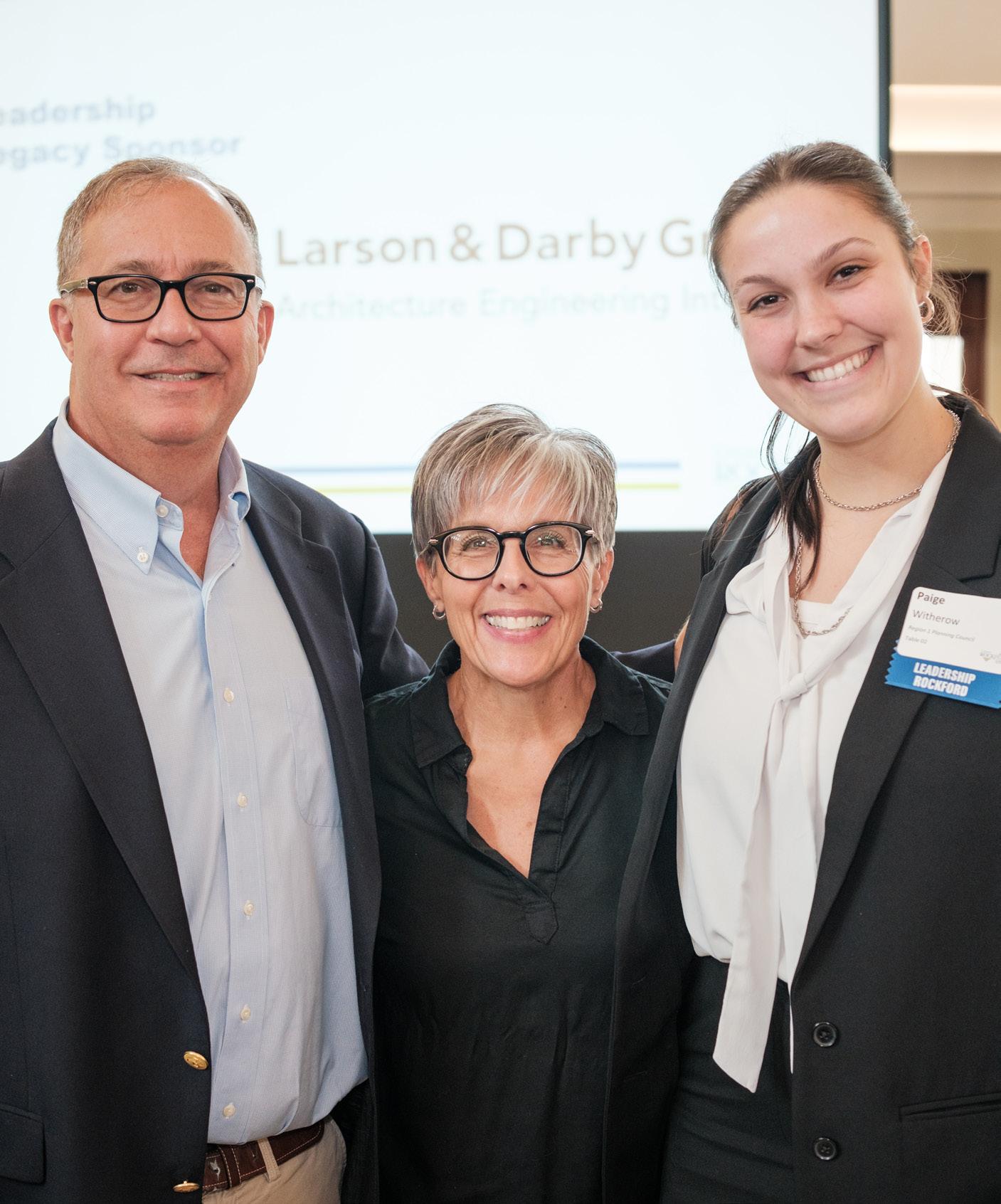
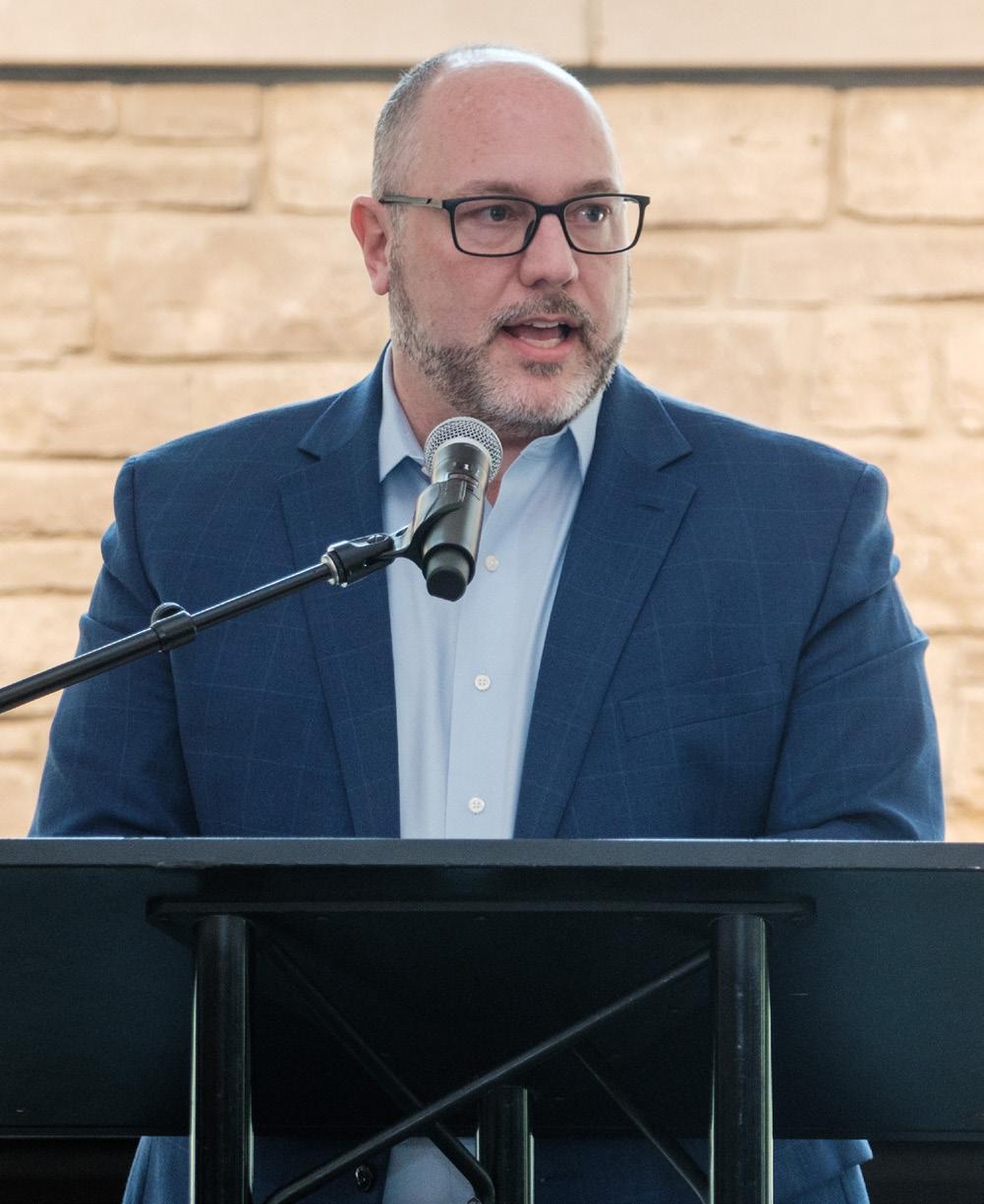
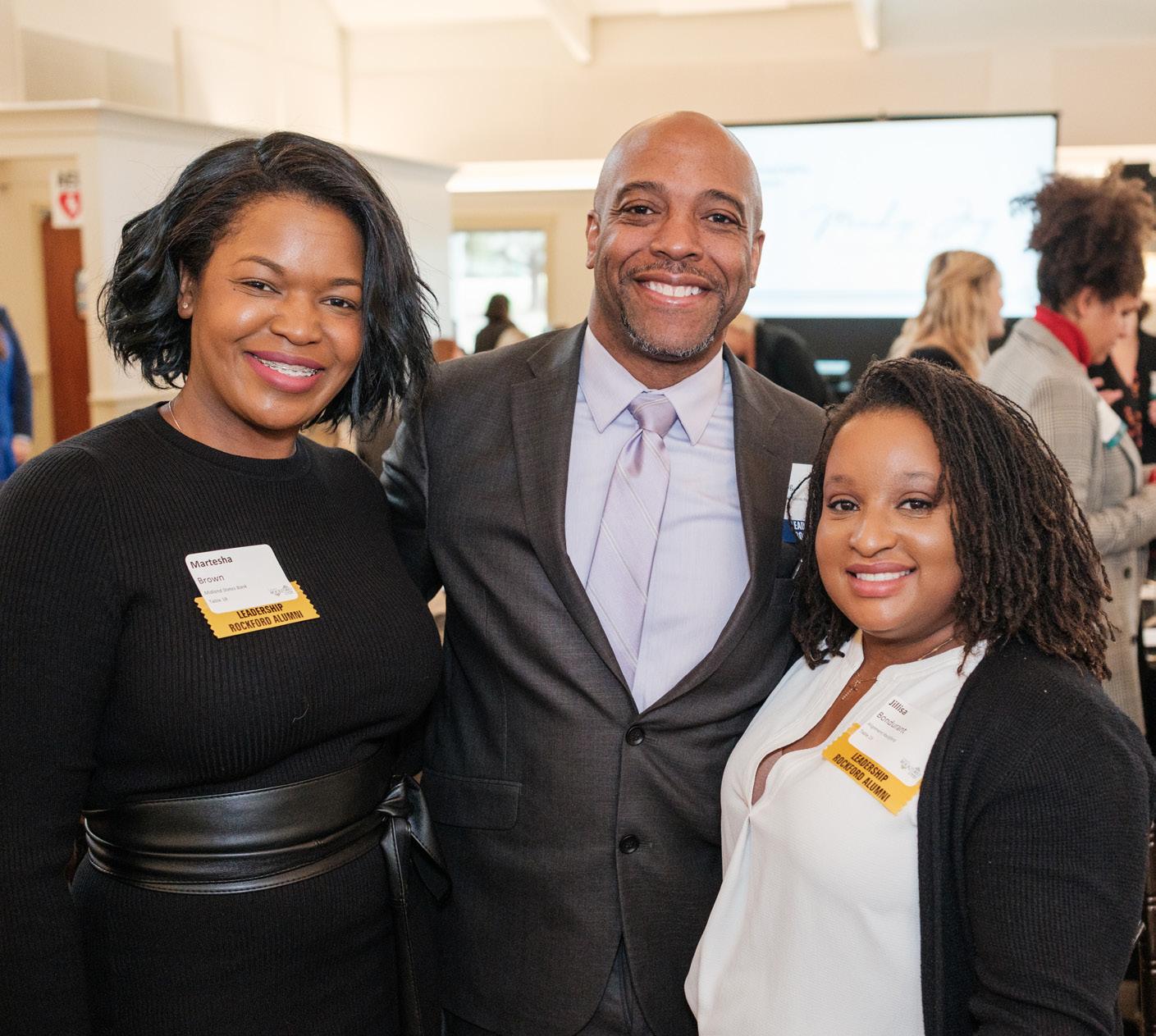

it matters and how to get it right
By Tim Maurer, technical specialist, IMEC
Have you ever walked into a wellorganized space and thought, “Wow, this just makes sense”? That’s the power of a great layout. Whether it’s a factory, warehouse, or office, how things are arranged can make or break efficiency.
In this article, we break down what facility layout is, the different types, and how you can design a setup that boosts productivity and keeps things running smoothly.
What is facility layout?
Simply put, facility layout is how equipment, workstations, and employees are arranged within a space. The goal? To make operations as efficient, safe, and cost-effective as possible.
A well-planned layout reduces wasted time and effort, keeps materials moving seamlessly, and helps employees work comfortably and safely. Think of it like organizing your kitchen—when everything is where you need it, cooking is much easier. The same principle applies to manufacturing, logistics, and other industries.
Different types of facility layouts
Not all layouts work the same way. The best choice depends on what a company produces and how its operations are structured. Here’s a quick breakdown:
Process layout (job shop)—This setup groups similar machines or tasks together. Imagine a bakery where all mixing happens in one area, baking in another, and packaging in a third.
Pros: Super flexible; great for custom orders. Easy to adapt when demand shifts.
Cons: Moving materials between processes can be inefficient. Takes longer to complete products.
Product layout (assembly line)—This is the classic assembly line setup, where products move through a fixed sequence of steps—like a car manufacturing plant.
Pros: Highly efficient and streamlined. Cuts down material handling time.
Cons: Not flexible; changes in product design may require a complete
overhaul. Higher costs due to specialized equipment.
Cellular layout—Here, the facility is divided into small “cells,” each dedicated to a specific product family. Think of it like a mini production line for similar products.
Pros: Reduces unnecessary movement of materials. More flexible than a strict assembly line.
Cons: Requires careful planning to group products correctly. Can be costly to set up.
Fixed position layout—For large or complex products (like airplanes or ships), the product stays put while workers, tools, and materials come to it.
Pros: Ideal for big, hard-to-move projects. Reduces risk of product damage.
Cons: Can be inefficient since everything has to be transported to the product. Less flexibility for changes.
Combination layout—As the name suggests, this blends two or more layout types. For example, a factory might use a product layout for mass production but a process layout for custom work.
Pros: Customizable based on business needs. Combines the best of different layouts.
Cons: Can be tricky to manage effectively. Requires careful coordination. Why facility layout matters
Facility layout isn’t just about where machines and employees go—it’s about how smoothly everything runs. Here’s why it’s a big deal:
• Boosts efficiency. A well-organized space means less time wasted moving materials, searching for tools, or waiting for things to happen.
• Cuts costs. Better layouts mean less wasted time, lower energy use, and fewer unnecessary steps, all leading to reduced expenses.
• Improves product quality. With the right setup, employees can work more accurately and efficiently, reducing errors and defects.
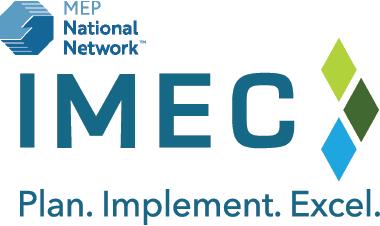
• Enhances safety. Clear pathways, ergonomic design, and smart space planning help prevent accidents and keep employees safe.
• Increases flexibility. As business needs change, a smart layout allows for easy adaptation without major disruptions.
How to design an effective facility layout
So, how do you create a layout that works? Here’s a simple step-by-step approach:
• Define your goals. Are you trying to speed up production? Reduce costs? Improve safety? Knowing your priorities will guide the design.
• Analyze your workflow. Look at how materials, products, and people move through your facility. Identify bottlenecks and areas where things slow down.
• Choose the right layout. Based on your workflow, decide which type of layout (or combination) makes the most sense.
• Plan for flexibility. Business needs change, so design your layout to adapt easily to future growth or new processes.
• Test it out. Before committing, use simulation tools or create a smallscale model to see how the layout works in practice.
• Implement and improve. Once your layout is in place, keep an eye on how well it’s working. Gather

feedback and tweak as needed to keep things running smoothly.
A great facility layout isn’t just about organization—it’s a key driver of efficiency, quality, and profitability. Whether you’re running a factory, warehouse, or retail space, the right setup can make all the difference.
By understanding your workflow, choosing the best layout, and continuously optimizing, you can create a space that supports productivity and long-term success.
The Illinois Manufacturing Excellence Center (IMEC) serves as the state’s U.S. Department of Commerce NIST Manufacturing Extension Partnership center. IMEC is a team of industry improvement specialists dedicated to providing Illinois manufacturers with the solutions, tools, and resources to create sustainable, competitive futures. IMEC has seven offices statewide and 55 full-time industry improvement specialists. For more information, visit www.imec.org.
The views expressed are those of the author(s) and do not necessarily represent those of the Greater Rockford Chamber of Commerce.
Tim Maurer is an engineering and manufacturing project management professional with more than 30 years of experience. He has a master’s degree in manufacturing engineering from Bradley University and a bachelor’s in bioengineering from Arizona State University. He’s a certified 6 Sigma Black Belt expert with in-depth knowledge of capital equipment and continuous improvement.

GUEST COLUMNIST
construction program builds futures
By Melissa Hagerman, Harlem High School

Harlem High School recognizes that in today’s rapidly evolving job market, students need practical skills to prepare for their futures. To achieve this, Harlem allows high school students to pick a pathway of interest—one which tailors their schedules to the classes that best support their chosen career. This approach provides students with an education that equips them for success after high school. A notable addition to Harlem High School’s pathway offerings is the newly revamped construction program, an integral part of the strong and stable Manufacturing, Engineering, and Technical Trades Pathway.
The construction program provides hands-on experience, teaches realworld skills, and opens doors to various career paths. By combining classroom education with on-site training, our construction program not only prepares students for work immediately after graduation but also instills discipline, teamwork, and problem-solving skills that are essential in any field.
High school construction programs fall under the umbrella of career and technical education (CTE). Our program offers students an introduction to the construction industry, including basic concepts, such as building design, blueprint reading, electrical work, plumbing, carpentry, and safety practices. Then, they take what they have learned into a workshop or construction site where they can put theory into practice through our Work Based Learning program. This program helps students find internships in their chosen field. In their internship, students work with a local construction company to support the skills learned in the classroom and to further develop them in the field.
Brett Polhill, owner and founder of BP Roofing Solutions, was the first to take on an intern from the construction program and, in fact, took two.
“I really love the enthusiasm and thirst to learn from the interns. They’re really excited to be there and we really need a new generation [of people] coming into the trades,” he said. “The
construction program is great for kids who don’t desire college. I tried a year of college, and it just wasn’t for me. Instead, I came out and worked to make $80-100k a year instead of being in debt. Encouragement is valuable; kids need to know that college isn’t the only way to be successful. It’s about working a job you love and can be proud of.”
Upon completion of the program, students have the option to enter the workforce directly, armed with newly acquired skills that are in high demand in the construction industry. From residential to commercial construction, the opportunities for entry-level jobs in fields like carpentry, electrical work, roofing, plumbing, or masonry are plentiful. According to the U.S. Bureau of Labor Statistics, the construction industry is expected to grow by 5% between 2019 and 2029, creating hundreds of thousands of new jobs.
“The trades are a dying breed. Lots of kids used to learn from their parents and had a trade in school, and now they don’t get that experience. Our program gives them that and helps set them up for a job,” said Chris Zanoni, the construction teacher at Harlem High School. “The best part about what I do is seeing a kid step back and look at a project they just completed. That fire gets in their eye and they’re so proud. We want to keep that fire going so our graduation rate can help support the retirement rate in our local community.”
However, the value of Harlem’s construction program doesn’t stop with just a first job. It also serves as a springboard to further education. Our education structure is built around the feedback we have received from our community partners through advisory meetings and in conjunction with the standards of education and the expectations of our local colleges.
Support from companies and organizations such as Local 11, Local 23, BP Roofing Solutions, Schmeling Construction Company, Spider Company, Project First Rate, and Rock Valley College have been crucial in
the development of our programs. Students interested in continuing their education after high school can pursue certifications, apprenticeships, or even college degrees in construction management, civil engineering, or architecture. This flexibility allows students to pursue a variety of pathways depending on their interests, whether that’s working on a construction site or managing large-scale building projects.
Although Harlem’s high school construction program is still in its infancy, we’re looking forward to working in collaboration with our local communities to enable students to take part in real-world projects that benefit the area. For example, students might help build homes for low-income families, repair community centers, or contribute to public infrastructure projects. These projects provide students with a sense of accomplishment and pride while making a tangible impact on their hometown.
Harlem’s construction program provides students with the tools they need

to succeed in a dynamic and rewarding industry. By offering a blend of technical training and practical experience, the program equips students with the skills needed to thrive in a variety of careers in construction and beyond.
More than just a way to gain technical skills, Harlem’s Manufacturing, Engineering, Technology and Trades Pathway teaches valuable life lessons in teamwork, problem-solving, and time management. For students looking for a hands-on education that leads directly to a rewarding career, our construction program could be the perfect foundation for their future. For partners looking to help train the future workforce and grow their business—we’ve got some ready, willing, and eager bright young minds just waiting for you to open your doors up to them.
The views expressed are those of the author(s) and do not necessarily represent those of the Greater Rockford Chamber of Commerce.
Melissa Hagerman is a seasoned business professional with over 10 years in education, primarily in higher education. She began working as a Work Based Learning coordinator/teacher at Harlem High School this past school year and enjoys sharing her passion for teaching with a younger generation.

National Small Business Week (May 4-10) is an ideal time to celebrate the passion and resilience of the local entrepreneurs who help drive our regional economy forward. At the Rock Valley College Small Business Development Center (SBDC), my team and I share a mission to empower small business owners with the handson guidance, innovative solutions, and financial strategies they need to overcome common business challenges.
Entrepreneurs and small businesses are the engine behind local economic growth, reinvesting in their communities and creating jobs that fuel regional progress. Yet every business owner faces myriad challenges, from managing cash flow and accessing capital to navigating growth and expansion. For many business owners, these hurdles can feel overwhelming. The SBDC is committed to turning obstacles into opportunities with a comprehensive approach to capital advisory and mergers and acquisition (M&A) strategy. The inspiring success stories of two Rockford-area businesses showcase the real-world impact of the SBDC’s no-cost advisory services.
Case study #1
A union pipefitting and HVAC company provides a compelling example of how bespoke support can drive sustainable growth. Facing an urgent need for working capital to expand operations, the owners realized that growth would require more than just ambition. It required a solid financial foundation and a well-crafted strategic plan. So, they approached the SBDC for support.
We worked closely with the owners to gather and analyze essential financial documents, such as tax returns, cash flow projections, and balance sheets. By modeling various scenarios that included
hiring additional staff and increasing material sales, the SBDC advisors crafted a persuasive case that ultimately secured two lines of credit and a loan for the business.
One significant challenge the company faced was the expectation that they would use personal assets as collateral for a loan. When the owners were pressed to use a personal home as security, we identified an alternative that worked for both parties—leveraging the company’s business deposits. This strategic maneuver circumvented any risk to personal assets and established a robust financial footing for future growth. As a result, the owners quickly amassed enough funds to expand their workforce with new full-time employees.
Case study #2
Equally transformative is the story of a local bakery celebrated for its specialty desserts. When the owner set out to acquire the business, she recognized that the acquisition process would be complex and fraught with potential pitfalls. To navigate these challenges, she sought out the SBDC for M&A expertise and financial guidance.
We worked with local bank representatives to conduct a thorough evaluation of the company’s financial health by collecting key documents, such as profit and loss statements, balance sheets, and tax returns. Based on this rigorous analysis, the SBDC helped the buyer create a detailed, 24-month cash flow projection and business valuation that became the cornerstone of the acquisition strategy.
One of the most critical processes we assisted with was the development of a comprehensive lender credit memo that articulated the business case for acquisition. With this document in hand, the buyer negotiated a substantial
Train, Gain, and Grow: Small Business Tools for 2025, noon, Monday, May 12, Greater Rockford Chamber of Commerce, 308 W State St, Suite 190, Rockford. Workshop on workforce development funding opportunities and strategies for small businesses. Presented by the Illinois Small Business Development Center (SBDC), the City of Rockford Economic Development Office, the Greater Rockford Chamber of Commerce, and The Workforce Connection.
National Small Business Week Two-day Virtual Summit, May 6 and 7, hosted by the U.S. Small Business Administration. Educational presentations, free business resources, peer-to-peer networking rooms, and expert business advice from SCORE mentors. Pre-registration required for this free event. Visit www. sba.gov for details.
purchase price reduction and secured a competitive financing package for the business.
The SBDC’s role extended beyond securing financing to providing critical support during negotiations with the previous owner and the building’s landlord. Additionally, we helped restructure the lease, meticulously evaluating financial risks and ultimately yielding significant rent savings for the upcoming years. Once the acquisition was finalized, the new owner hired additional employees, ensuring the bakery’s operational capacity aligned with its renewed financial strength. This successful partnership underscores the SBDC’s proficiency in guiding business transactions and facilitating M&A deals.
These case studies reveal how critical business knowledge and industry expertise are to building a successful small business. Fortunately, the SBDC

is not simply a financial resource—its advisors serve as partners committed to the overall success of every business they serve. From comprehensive capital advisory to strategic M&A support, our approach is designed to guide entrepreneurs and small business owners to long-term success.
As we celebrate National Small Business Week, these stories remind us that the road to success is rarely easy. But with the right support, every challenge can be transformed into an opportunity. The Rock Valley College SBDC is building a vibrant, resilient regional economy through healthy, thriving small businesses.
The views expressed are those of the author(s) and do not necessarily represent those of the Greater Rockford Chamber of Commerce.
Nate Jordan is the SBDC center director and a Certified Mergers & Acquisitions Advisor. His specialized expertise enables him to tailor strategies that directly address each business’s unique challenges. His commitment to empowering local business owners to thrive in today’s competitive market has solidified the SBDC’s reputation as a trusted consultancy.

Source: International Economic Development Council www.iedconline.org Economic Development Week | May 12-16

By Chris Renfro, Rockford Career College

The construction industry stands at a critical crossroads. As demand for infrastructure, housing, and commercial development continues to surge, the industry faces a significant shortage of skilled labor. Workforce development has become not only a priority for contractors and developers but also a focal point for the broader business community, trade schools, and labor unions. Navigating this issue will shape the economic resilience of regions across the country.
According to the U.S. Bureau of Labor Statistics, the construction industry is projected to grow steadily over the next decade, driven by public infrastructure investments, green building initiatives, and commercial expansion. Yet, the industry is already short hundreds of thousands of workers—a gap expected to widen unless aggressive workforce development strategies are implemented.
At the heart of this need is a shift in demographics. A large segment of the current skilled workforce is nearing retirement age, with fewer young workers
entering the trades to replace them. Unlike past decades, today’s industry requires a blend of technical knowledge, problem-solving skills, and adaptability to new technologies—qualities that must be cultivated through targeted education and training.
Several interlocking challenges contribute to the shortage. First and foremost is the outdated perception of construction as a “fallback” career. For too long, high schools have pushed fouryear college degrees as the default path to success, often ignoring or undervaluing skilled trades. This cultural mindset has discouraged generations from considering construction as a viable, lucrative career option.
Second, there is a lack of alignment between industry needs and the training provided in many educational settings.
Trade schools and technical colleges often face resource limitations, outdated equipment, or limited capacity to keep up with evolving construction technologies such as Building Information Modeling
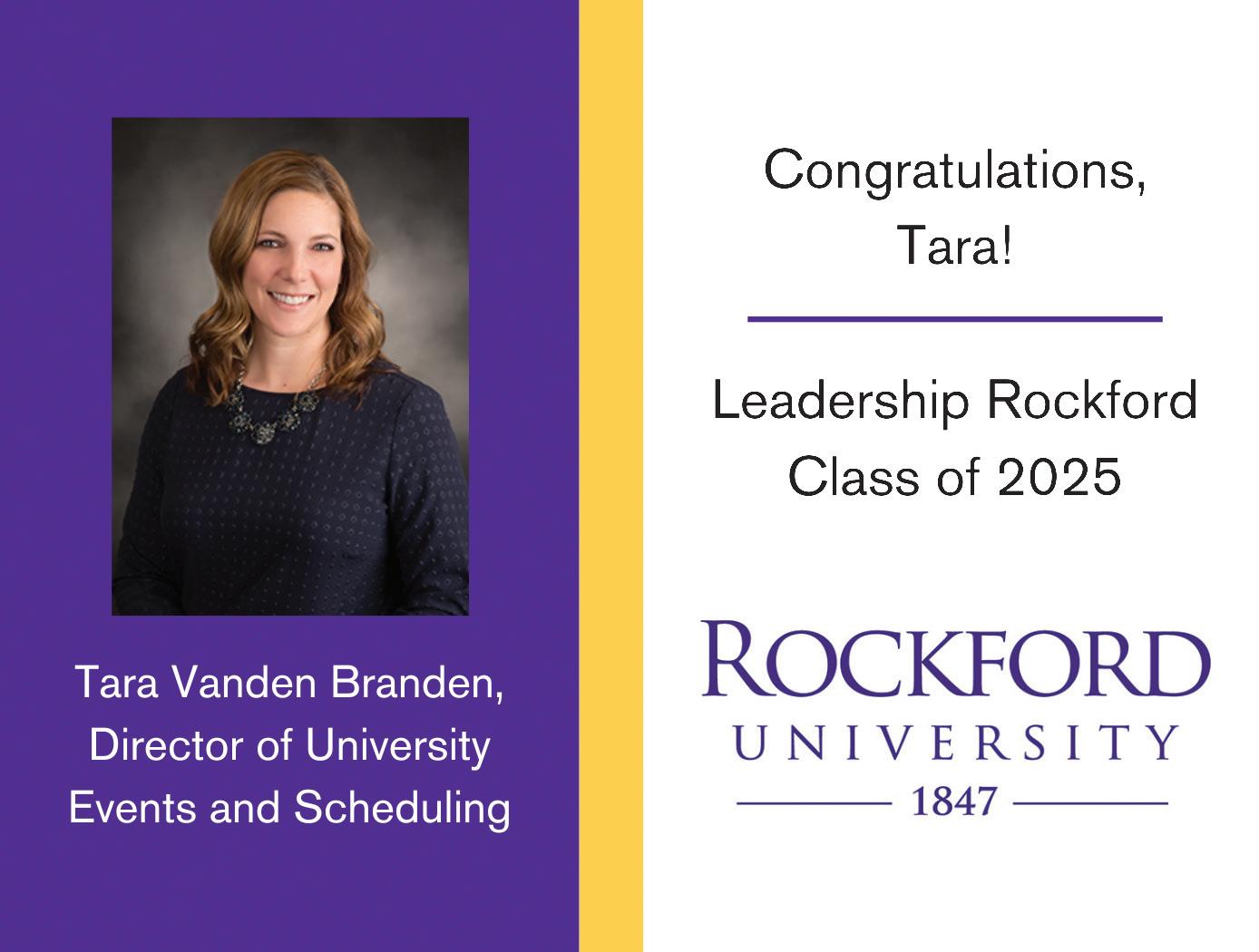
(BIM), automated machinery, and sustainable building practices.
Unions and apprenticeship programs have long been a beacon of effective training in the construction sector. However, these programs are not immune to the same challenges. Many face recruitment difficulties, particularly in underrepresented communities, where awareness of these opportunities remains low. Additionally, the time and financial commitment required for apprenticeships can be a barrier without the right support systems in place.
Despite these hurdles, new trends in workforce development offer hope. Public-private partnerships are increasingly stepping in to bridge the gap between education and employment. Construction firms are collaborating with local school districts, community colleges, and workforce boards to develop targeted pre-apprenticeship programs, introduce high school students to the trades, and create direct pipelines into apprenticeships.
Technology is also playing a transformative role. Virtual reality (VR) training, online certifications, and mobile learning platforms enable more flexible and accessible pathways for skill development. These innovations help modernize training and appeal to younger generations familiar with digital tools.
For the wider business community, the implications of construction workforce development are significant. Delays in building projects due to labor shortages can stall economic growth,

drive up costs, and hinder expansion plans for businesses across sectors. A robust construction workforce supports the backbone of the economy—housing, transportation, utilities, and commercial infrastructure.
Companies outside the construction sector also have a role to play. By supporting training initiatives, investing in internships, or partnering on education-to-employment pipelines, businesses can contribute to a more resilient local economy. It’s a community-wide issue that benefits from collaborative solutions.
Trade schools and union apprenticeship programs remain cornerstones of workforce development. These institutions provide handson, practical training that prepares students not just for jobs but for lifelong careers. Union programs in particular offer structured pathways with wage progression, benefits, and mentoring— elements that are crucial for long-term retention and success.
Workforce development in the construction industry is more than a matter of filling jobs—it’s about building sustainable communities, supporting economic growth, and offering meaningful career paths to future generations. By addressing the challenges head-on and embracing innovative solutions, stakeholders across education, labor, and business can help ensure the industry thrives for decades to come.
The views expressed are those of the author(s) and do not necessarily represent those of the Greater Rockford Chamber of Commerce.
and heating, ventilation, air conditioning, and refrigeration. Visit www.rockfordcareercollege.edu for details.

Funds distributed on a first-come, first-served basis
The City of Rockford offers two primary funding programs to support commercial and industrial property improvements. These programs make significant property upgrades financially feasible, encourage private investment, and revitalize key areas of Rockford.
TIF Commercial & Industrial Rehabilitation Program
Purpose: Provides forgivable loans to business and property owners making improvements to commercial and industrial spaces within select Tax Increment Financing (TIF) Districts in Rockford.
Funding: Covers 50% of eligible project costs, up to $25,000 per project.
Eligible areas: Nine specific TIF Districts, each with $150,000 in available funds, distributed on a first-come, firstserved basis:
• Auburn Street TIF
• Broadway TIF
• East River TIF
• East State and Alpine Rd TIF
• Midtown TIF
• Mulford Rd and East State St TIF
• North Main & Auburn St TIF
• River District North TIF
• W State and Central Ave TIF
Eligible projects: Improvements that add value, extend longevity, or provide substantial or aesthetic upgrades. Deferred maintenance and code compliance upgrades are also eligible.
Application deadline: July 3, 2025, or until funds are exhausted. See eligibility and program guidelines at rockfordil.gov.
How TIF works: TIF districts capture increases in property tax revenue resulting from rising property values. These funds are then reinvested into the district to support public and private improvements, without raising the existing tax rate.
Purpose: Offers forgivable loans to property owners and tenants making improvements to commercial and industrial properties in seven designated commercial corridors outside of TIF districts (with one exception).
Funding: Covers 75% of eligible project costs, up to $25,000 per project.

Eligible corridors: Seven specific corridors, each with $125,000 in available funds, distributed on a first-come, firstserved basis:
• 11th St Corridor – 16th Ave to Bypass 20
• Charles St Corridor – 17th Ave to S Alpine
• Harrison Ave Corridor – Rock River to S Alpine
• N Main St Corridor – Brown Ave to Campus Hill Blvd
• Rockton Ave Corridor – Van Wie Ave to W Riverside Blvd
• S Alpine Corridor – Larson Ave to Bypass 20
• S Main St Corridor – Kent St to Marchesano Dr (TIF District location requirement does not apply)
Eligible applicants: For-profit businesses and property owners established by December 1, 2024, operating within the designated corridors and zoned commercial or industrial.
Application deadline: June 20, 2025, or until funds are exhausted. See eligibility and program guidelines at rockfordil.gov.
For more information on these programs, visit rockfordil.gov, email EconomicDevelopment@RockfordIL.gov, or call 779-348-7162.

By John Groh, GoRockford


gateway to Prairie Street Brewhouse and Nicholas Conservatory. The work, which begins this month (May), will include resurfacing, improvement of the railroad tracks in the middle of the street, burial of electrical lines, replacement of a centuryold water main, new sidewalks, bike lanes, light poles, and streetscape beautification.

Driving through the city of Rockford right now, you will witness a dizzying amount of roadwork. That’s because investment in our infrastructure— starting with Rockford’s streets, sidewalks, sewers and water mains, bridges, and bike paths—is at a record high.
A look at the interactive map of Capital Improvement Projects on the city’s website shows a total of 64 projects in progress. By July, for summer work alone, $97 million in construction contracts will be awarded for projects ranging from large reconstruction jobs to the resurfacing of heavily trafficked corridors. This is the latest and largest investment in road improvements since 2021.
Rockford is outpacing many Illinois cities in road construction, thanks in large part to the 1% infrastructure sales tax that generates approximately $16 million annually. With this revenue, Rockford has secured state and federal grants for larger infrastructure projects by showing we have skin in the game when it comes to funding better roads.
That level of infrastructure investment is vital to supporting a thriving visitor economy. Rockford continues to win the attention of travel journalists and their audiences—not by mimicking other destinations but by offering something distinctly its own. We may not be defined by labels like capital city, university town, or coastal getaway, but our community has built a compelling collection of high-value tourism assets that stand out on their own merit. And well-maintained, easy-to-navigate roads and public infrastructure play a key role in that success. They create a strong first impression, help visitors move comfortably and confidently throughout the city, and encourage them to stay longer and explore more.
In recent years, several major attractions and venues have been added to Rockford’s tourism mix. The UW Health Sports Factory, opened in 2016 along the downtown riverfront, has become one of the Midwest’s premier indoor sports facilities. Prairie Street Brewhouse, opened in 2013, has become one of the city’s premier dining and entertainment
venues. In 2020, the Embassy Suites by Hilton Rockford Riverfront opened in another beautifully restored historic building, bringing a four-star hotel to the heart of downtown. Most recently, the Hard Rock Casino Rockford opened in 2024 and quickly became one of the top three casinos in Illinois for both revenue and visitation.
A city’s gateways, particularly to its downtown assets, lay the groundwork for attracting further economic development and visitation. This summer alone, there will be two major infrastructure projects downtown, one on each side of the river.
On the east side of the river, a $6.6 million project will reconstruct Madison Street, transforming a major

On the west side of the Rock River, a $10.5 million project will modernize Davis Park (represented in the images with this article). Work is starting this summer and will include such improvements as a concert pavilion, a skate park, a riverfront recreation path, a playground, and a freestanding concession stand with restrooms. This development aligns with Thrive 2035, the Destination Master Plan we rolled out last fall. Upon completion, which is expected in summer of 2026, the Davis Park project will bring new foot traffic to the South Main Street corridor transformed by the Embassy Suites hotel. Work on an even larger infrastructure investment downtown is expected to start in the fall. A $22.5 million project will revitalize a 1.25-mile portion of Chestnut Street as it crosses its namesake bridge and turns into Walnut Street and First Avenue on the east side of the river. The project will include resurfacing, sidewalk improvements, addition of a bicycle lane, decorative lighting, and purchase of three electric buses to circulate around downtown—efficiently moving visitors and residents between downtown attractions and businesses.
Together, all three of these projects will make navigating downtown easier whether you drive, walk, bike, or ride a bus.
In every community, road quality is a hot topic. As I travel throughout Illinois and to other mid-sized cities across the country, I always return home with a new appreciation for the quality of Rockford’s roads. Our investment shows, and it’s helping drive our city’s momentum forward.
The views expressed are those of the author(s) and do not necessarily represent those of the Greater Rockford Chamber of Commerce.

As president/CEO of GoRockford, John Groh works to make the Rockford area a thriving, multi-dimensional region that is recognized, respected and modeled. He believes the journey through a city should be just as welcoming as the destinations themselves—and that well-built streets, like great service, set the tone for a memorable experience.
By Ehren Jarrett, superintendent, RPS 205
Last month, I made the difficult decision not to seek another contract as superintendent of Rockford Public Schools. As I reflect on my 12 years in this role, I’m filled with gratitude for the support and collaboration. Your investment in our schools and students has been crucial in shaping a brighter future for Rockford. While there is always more work to do, I am proud of our collective accomplishments, and I’d like to highlight some of the progress we’ve made together.
Academic growth & student success
One of the most rewarding achievements during my tenure has been the academic growth across the district. RPS 205 has made significant strides in improving literacy, particularly in grades 3-8, laying a strong foundation for future academic success. Our graduation rates have steadily risen, reflecting the dedication of students and educators. Freshman on Track data, a critical indicator of future success, has shown remarkable improvements since 2019. This progress is a direct result of early interventions, mentorships, and robust support systems.
Fiscal responsibility & community investment
RPS has prioritized fiscal responsibility while providing the best educational experience. Over the past decade, we have maintained a flat tax levy, lowering the tax rate from 7.93 to 5.19. This has
been a significant benefit to property owners and businesses in Rockford. Additionally, this fiscal management contributed to a $1.2 billion increase in property values, reinforcing the financial health of our district and supporting a thriving, sustainable community.
Upgrades to facilities
We made substantial investments in school facilities, totaling nearly $700 million. These upgrades include new schools, renovations of outdated spaces, and the creation of modern fine arts and athletic facilities. We also enhanced safety measures to protect students and staff. Importantly, we modernized classrooms and added air conditioning, ensuring a comfortable learning environment that supports year-round achievement.
College & Career Academy excellence
A key success has been the creation of the College and Career Academies, which have prepared students for both higher education and the workforce. RPS 205 earned national recognition from the National Career Academy Coalition (NCAC) for its seven model academies. These academies connect students with real-world experiences and provide early college credit through advanced placement (AP) and dual credit programs. Business, health, service, and production academies serve as pathways for students to explore and refine their career interests.
Rockford-themed race car makes debut
Career pathway expansion & new readiness center
We’ve expanded career pathways across the district, integrating academic learning with hands-on experiences. Students gain valuable skills applicable to careers in healthcare, manufacturing, and technology. Our new College and Career Education Center (CCEC), opening in August, will further enhance these opportunities, helping students explore their passions and career goals.
STEAM Academy
We’ve made significant strides in expanding opportunities in science, technology, engineering, arts, and mathematics (STEAM). Haskell School transitioned to a STEAM Academy under Principal Loree Leathers, earning an exemplary state rating this year. This program integrates science, technology, engineering, and the arts, providing students with a well-rounded education.
The STEAM model will expand to middle schools in the 2025–26 school year, equipping students with the skills needed in an increasingly technologydriven world.
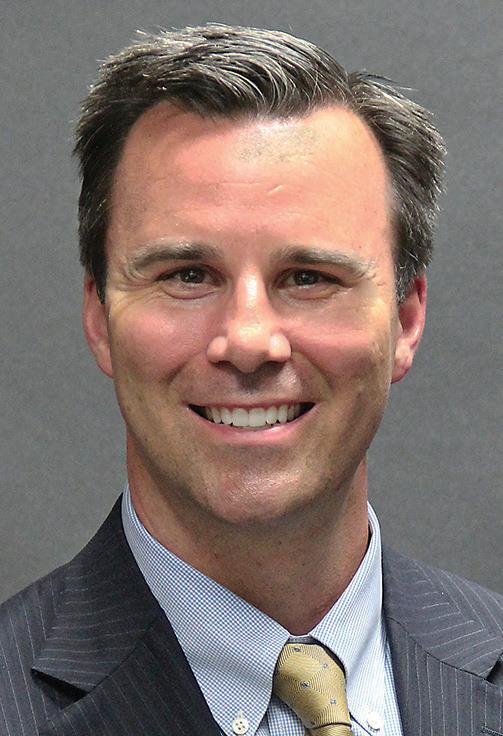
IB Program expansion
In 2023, we launched Rockford’s first International Baccalaureate (IB) program at Conklin Elementary, emphasizing critical thinking, intercultural understanding, and global awareness. This program will expand to middle schools in 2025–26, offering more students access to rigorous, globally-minded education.
As I continue in my role through June 30, 2026, my commitment to our students, staff, and community remains unwavering. The progress we’ve made together is a testament to the power of collaboration, and I am grateful for the support of our business community in strengthening our schools. While this chapter will eventually close, the work we’ve started will continue. The future of Rockford Public Schools is bright, and with your continued support, our students will thrive.
The views expressed are those of the author(s) and do not necessarily represent those of the Greater Rockford Chamber of Commerce.
Dr. Ehren Jarrett is in his 12th year as superintendent, where he has led transformative changes to improve educational outcomes and support the community. Recognized for his fiscal responsibility, Dr. Jarrett’s administration has kept the district’s tax levy flat for over a decade, reducing the tax rate while increasing property values.
NOTE: Alignment Rockford would like to clarify that Winnebago County was the recipient of the $300,000 grant from Illinois Department of Public Health mentioned in this column last month. The Winnebago County Health Department is the implementing agency, and Alignment Rockford is a Universal Newborn Support System strategic partner, not the grant recipient.
NASCAR. I’d never even watched a race before sponsoring Josh. But it’s been amazing,” Block said. “The relationship has expanded every year. Now NASCAR fans watch for our car designs and posts on Facebook, so we decided to use the race car during the Rockingham race to promote my hometown of Rockford.”

Last month, NASCAR fans got to see a Rockford-branded car driven by Wisconsin native Josh Bilicki and sponsored by Dan Block, owner of Rockford-based Insurance King. Bilicki was driving in the NASCAR Xfinity Series’ North Carolina Education Lottery 250 at Rockingham Speedway.
The car featured the GoRockford logo, an illustration of Rockford’s beloved Rockmen Guardians, a Rockford Peaches logo, an image of Symbol by Alexander Liberman, and the popular Sock Monkey.
Block began sponsoring Bilicki’s racing team in 2019. “I wasn’t a fan of
The 32,000 seat Rockingham Speedway was sold out for the April 19 race, and it’s estimated that more than one million people tuned in to watch the broadcast live.
“Insurance King is a great sponsor and partner in so many ways,” stock car driver Josh Bilicki said. “Dan’s game to try anything, even having the cars we’ve designed now part of video games people play. He also likes to give back to his hometown of Rockford, so the newly designed car is perfect for that.”
“Insurance King’s NASCAR sponsorship is good for Josh, it’s good
for Insurance King, and now it’s good for Rockford,” said GoRockford President and CEO John Groh. “When Dan asked us to partner, we knew it would be a chance to drive awareness of Rockford on a national level. The Rockford brand, graphics, and gorockford.com web address provide exposure for our city and is a perfect fit with Rockford’s historic ties to NASCAR and racing. We’re grateful to Dan Block and Insurance King for this awesome opportunity.”
GoRockford is the official destination marketing and management organization for Rockford and Winnebago County and is responsible for promoting the Rockford Region as an attractive travel destination and enhancing its public image as a dynamic place to live and work.
Insurance King agency writes low-cost auto policies. Founded in Rockford, Illinois, in 2001, it has offices in 15 states. Insurance King was the first insurance agency to ever sponsor a NASCAR driver.





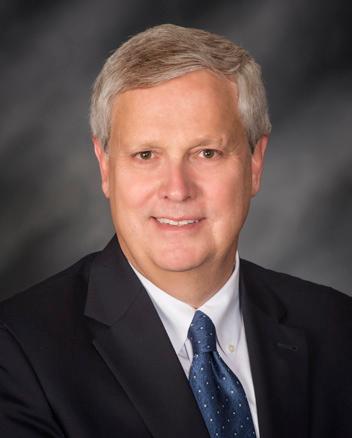

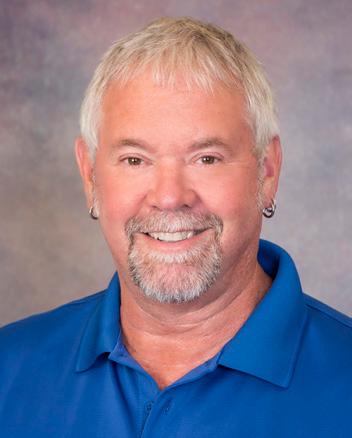
Julie Yurko (1), president and CEO of Northern Illinois Food Bank, joined the Chicago-based Global FoodBanking Network (GFN) Board of Directors.
Joe Chiarelli, Winnebago County Board chair, was elected as the new vice-chair of the Region 1 Planning Council (R1) Governing Board.
Mark Luthin was named president of the Natural Land Institute (NLI) Board of Trustees. NLI also welcomed new trustees Patrick Yarbrough, Dave Schroepfer, and Todd Tucker
Fehr Graham welcomed Sarah Sherman (2) as a project assistant and Billy Zuba as VP of operations, and promoted Colton Johnson (3) to staff engineer at its Rockford office.
(4)

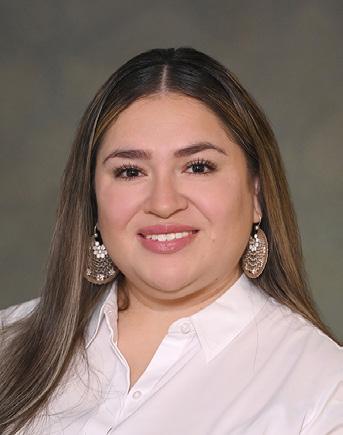

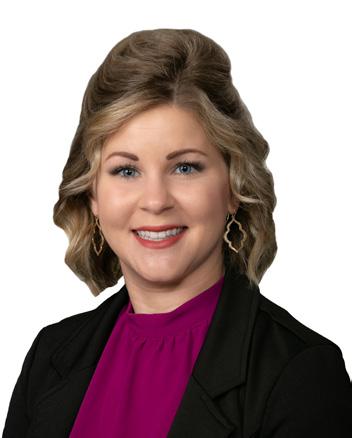
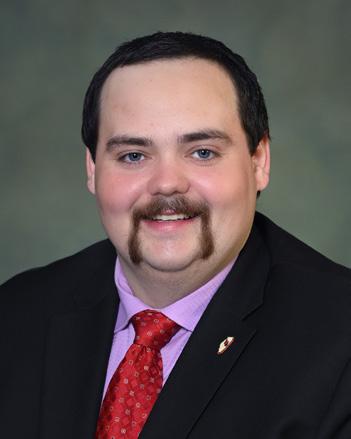

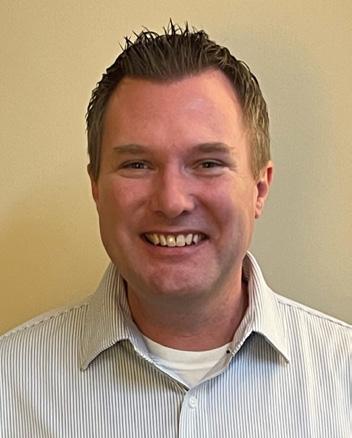

Reinvestment Act (CRA) loan officer serving the Rockford market.
Goodwill Industries of Northern Illinois welcomed Brandye Hereford (5), Excel Center director, Mekiela Howard (6); program and administrative coordinator, James Alfredson (7), Climate and Equitable Jobs Act (CEJA) program manager; and Terreia Walker (8), Accelerate Program career planner.
Associated Trust Company named Heath Sorenson (9), MBA, CFP®, CFIRS™, CTOP, as executive vice president, managing director and chief executive officer.
Engineering Enterprises, Inc. (EEI) promoted Angela Smith (10) to director of marketing and business development and Kristine Legler (11) to marketing coordinator. EEI also welcomed Mark Chilelli (12) as a senior project technician.
Zion Development appointed Rev. Dr. Michael Thomas as acting director and Susan Laten as volunteer interim executive director.







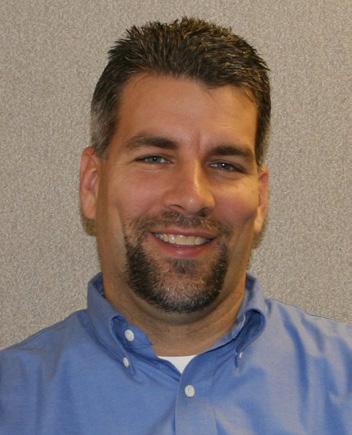



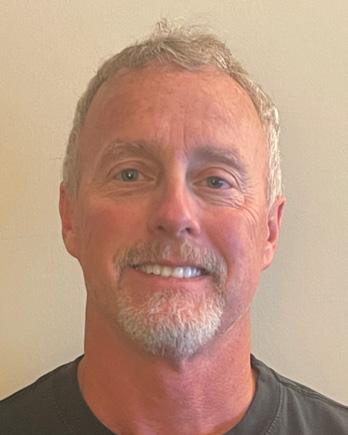
Chartwell Agency promoted Elizabeth Lazdins (13) to data/ digital specialist.
Rockford Mutual Insurance Company promoted Mason DeLille (14) to underwriting trainee and welcomed Levi Dutcher (15) as marketing representative.
Peter Baumann (16), president and CEO of Aqua-Aerobic Systems, Inc., retired on April 1 after 26 years with the company.
Stillman BancCorp N.A., promoted Ryan H. Reeverts (17) to agricultural loan officer.
Alec Grabowski (18), MBA, MHA, was named president of OSF HealthCare Saint Anthony Medical Center in Rockford.
Aqua-Aerobic Systems promoted the following employees: Dave Johnson (19), sr. electrical engineer group lead; Brian Pass (20), electrical design engineer group lead; Michaela Villarreal (21), aftermarket sales supervisor; Jackson Blacketer (22), field service
training manager; Tom Mowery (23), field service manager; Jeff Johnson (24), electrical engineering manager; Brad Christian (25), sr. electrical engineer; Kent Campbell, sr. electrical engineer; Edi Schardl (26), sr. electrical engineer; Joshua Long (27), Shop A technician; Gordy Bates (28), Shop A technician; Eric Johnson (29), Shop A technician; Mike VanHauen (30), Shop A technician; Dan Burns (31), IT/ hardware supervisor; Bill Douglas (32), electrical design engineer; Malcolm Aylward (33), sr. buyer; Carla Morrison (34), sr. buyer.
The Winnebago County State’s Attorney’s Office welcomed Jennifer Gadow (35) as a new assistant state’s attorney.
Mick Gronewold (36), PE, former president of Fehr Graham, is now Midwest Platform CEO with Trilon Group. Kyle Saunders (37), former chief strategy officer, is now Fehr Graham president. Fehr Graham also named Ross Grimes (38), PG, as assessment and remediation service lead.



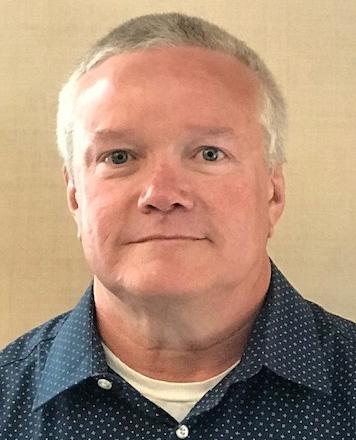



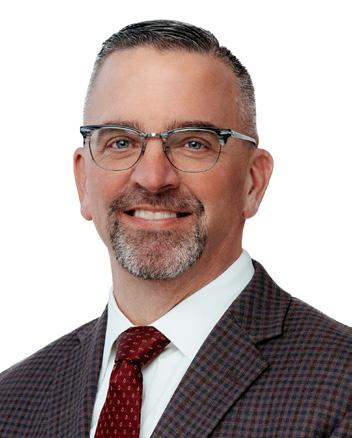


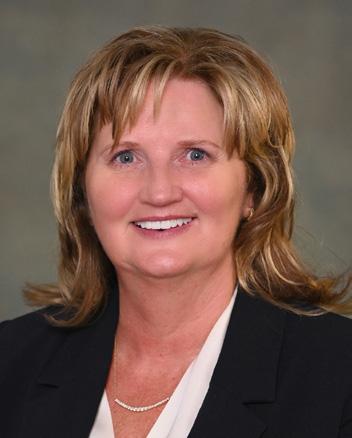




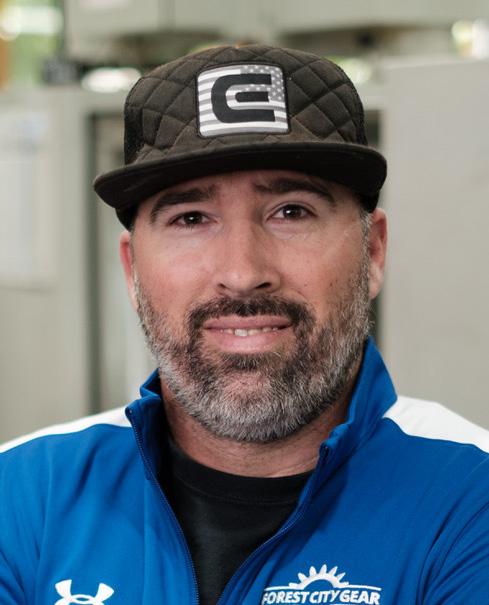



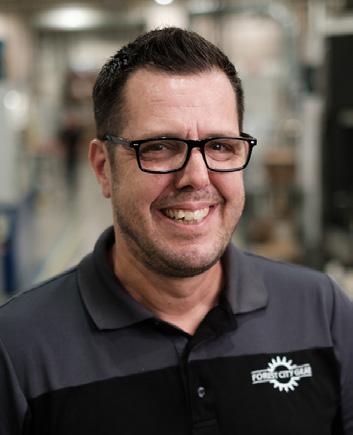


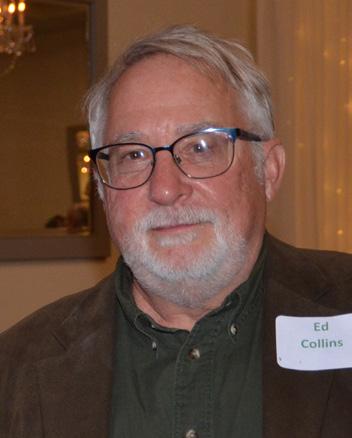

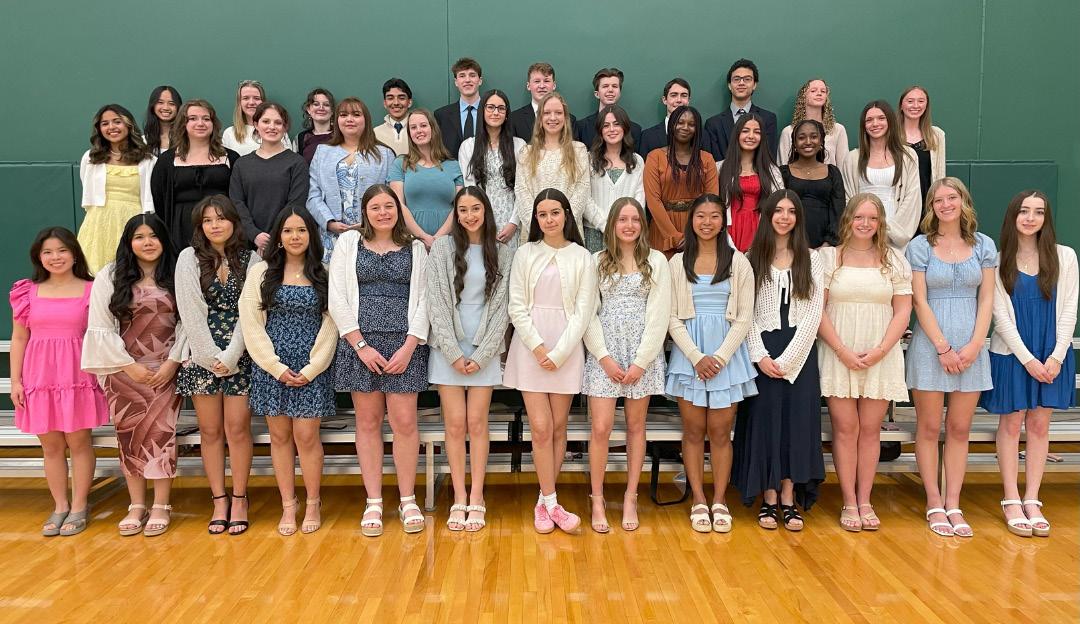

First National Bank and Trust announced key leadership promotions: Chelsea Ballou was appointed executive vice president, chief banking officer; Brian Goeller was named executive vice president, chief technology, innovation, and operations officer; Kyle Lamb was promoted to senior vice president, chief credit officer; Theresa Wendhausen, was promoted to first vice president, director of marketing and communications.
Stillman Bank welcomed Phyllis Oldenburg (39) as senior vice president operations.
Barbara Olson Center of Hope welcomed Abbilynn Fishe (40), cultural arts support professional, and Tammy Tufly (41), direct support professional.
EMPLOYEE/COMMUNITY RECOGNITIONS, AWARDS
Christopher Davenport (42), life and wealth insurance advisor at CoyleKiley Insurance, earned
membership in the 2025 Million Dollar Round Table (MDRT) for the second time.
Forest City Gear recognized the following employee milestones:
Paul Cristoph (43), five years; Jason Kenyon (44), five years; Mark Javurek (45) five years; Roger McMullin (46), 10 years; Vilay Cunningham (47), 10 years; Jason Slaven (48), 15 years.
Addison Coke (49) of Rockton and Robert Hopkins (50) of Rockford won the annual Winnebago County 4-H Public Speaking and Demonstrations Contest. Coke was the grand champion winner, and both are eligible to compete in the state contest.
Natural Land Institute (NLI) presented the George and Barbara Fell Award to Ed Collins (51) at their annual dinner. The award recognizes outstanding accomplishments in land conservation in northern Illinois.
Austin Kassner and Spherion Staffing & Recruiting in Rockford were recently recognized with the Service Excellence Award at Spherion’s annual convention.
Dane Johnson, Systems Change Advocate at RAMP Disability Resources & Services, received his ADA Coordinators’ Training Certificate.
First Mid Farm Manager Justin Wheeler (52) was recognized as an APEX 2024 Top Twenty National Producer by the REALTORS® Land Institute.
Boylan Catholic High School inducted 36 students (53) into the National Honor Society.
Rockford Mutual Insurance Company established an endowment fund for the Katie School of Insurance at Illinois State University. The first scholarship was presented to Elizabeth Mann (54)
GoRockford was named the 2025 Sports Tourism Organization of the Year by the Sports Events & Tourism Association (Sports ETA), recognizing GoRockford as the best in class among U.S. communities with populations under 500,000.
GoRockford was honored for its exceptional impact in recruiting and hosting sporting events, generating economic benefits, and elevating Rockford’s profile as a premier sports destination. Lindsay Arellano, VP of sales and service, and Kara Davis, senior sales manager, accepted the award on behalf of the organization at the 2025 Sports ETA Symposium in Tulsa.

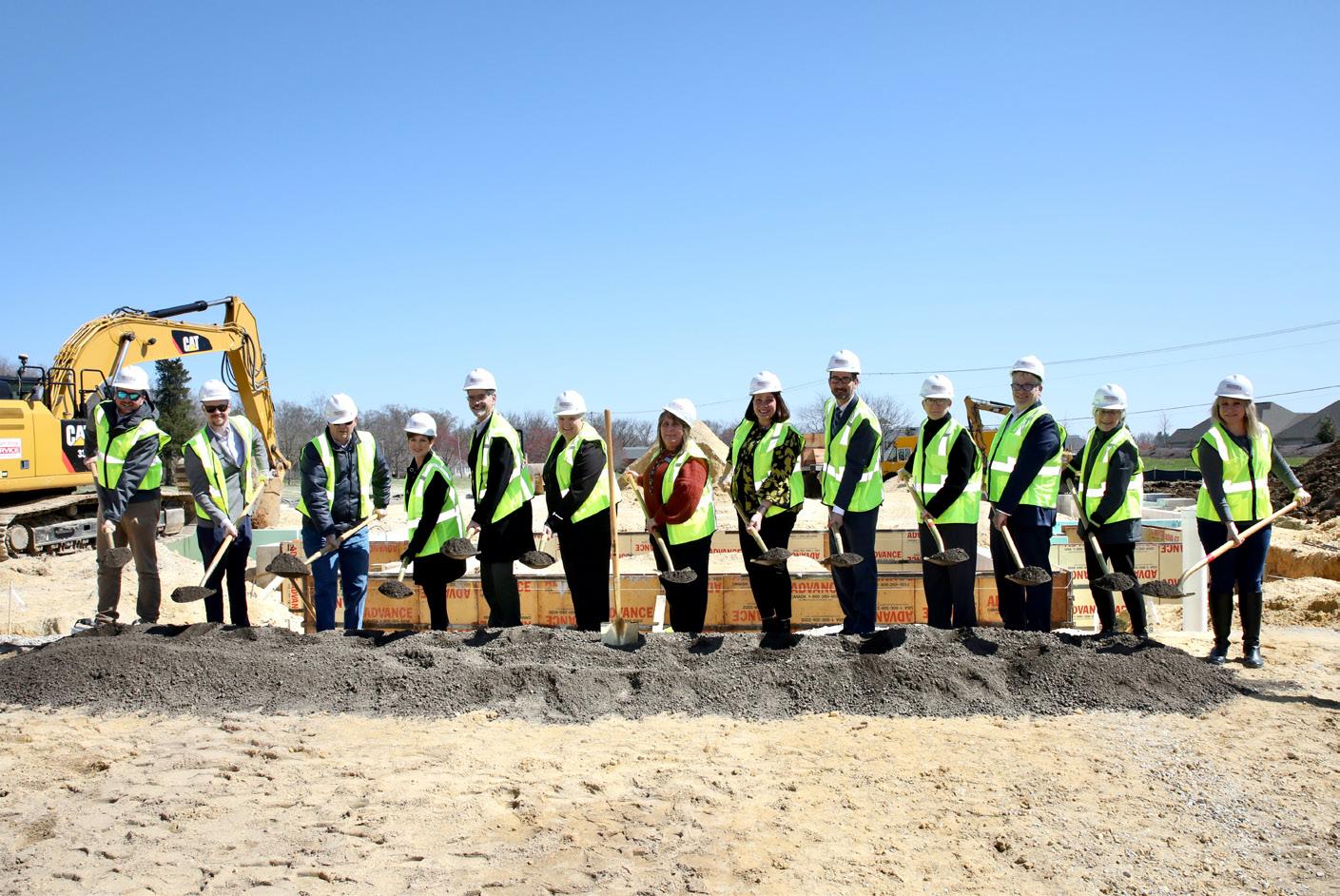
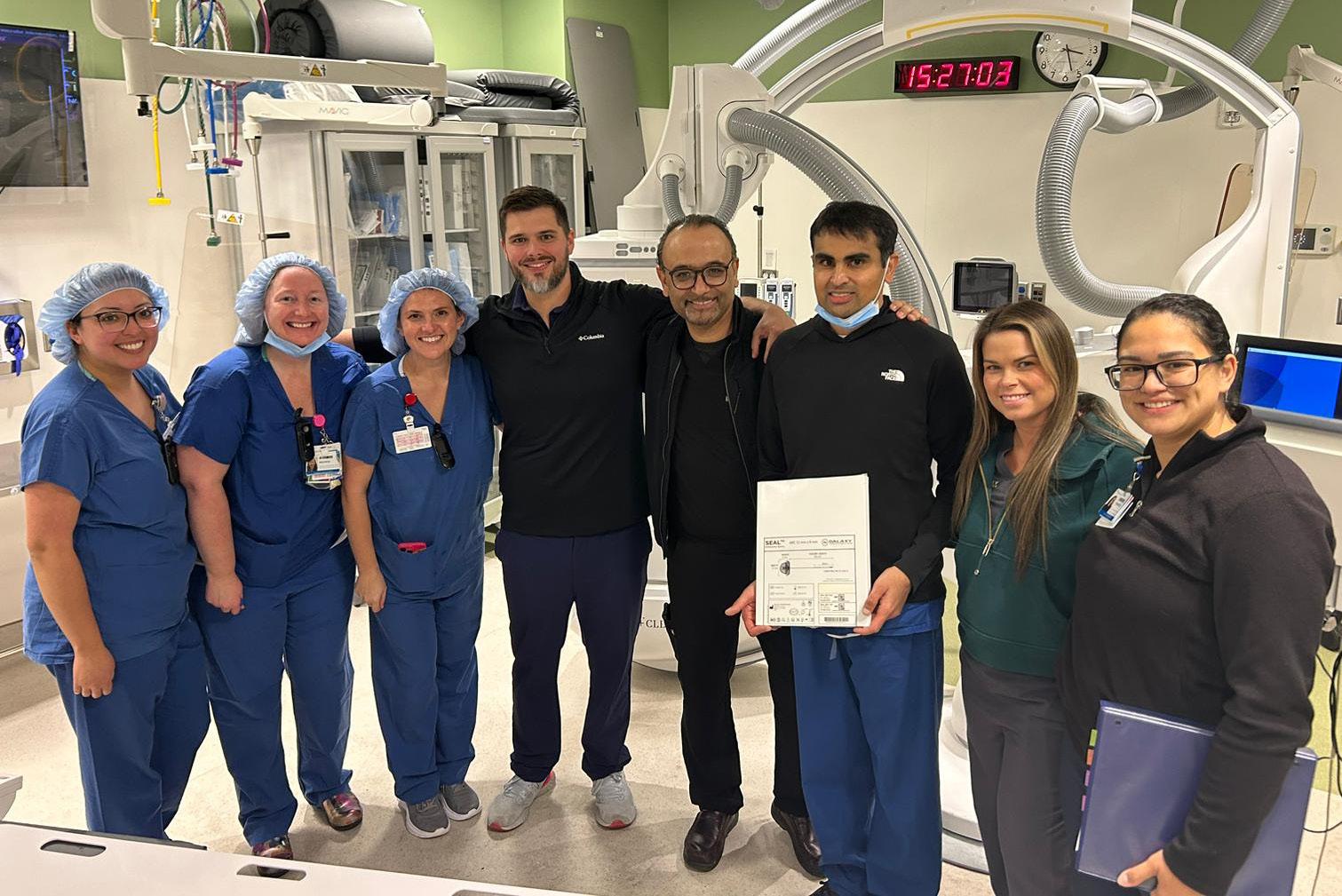
Mercyhealth’s Javon Bea Hospital (above) is the first hospital in the Midwest to successfully treat an aneurysm using the SEAL™ IT device. The procedure was performed as part of a research trial and clinical study focused on assessing the safety and efficacy of the SEAL™ Saccular Endovascular Aneurysm Lattice System.
First Mid Bancshares, Inc. (First Mid) earned a 2025 Top Workplaces USA award for the second consecutive year.
First National Bank and Trust announced a new collaboration with Ironwood Merchant Services to provide local businesses with payment processing solutions.
Greenlink Energy Solutions of Rockford is partnering with Zion West Enterprises to identify and fund renewable-energy projects for nonprofits that serve lowincome and historically disadvantaged communities. Eligible nonprofit organizations in the Rockford Region will receive nearly $1 million in solar energy installations as part of Illinois’ landmark Climate and Equitable Jobs Act.
OrthoIllinois and OrthoMidwest introduced Velys robotic-assisted technology for partial knee replacements, making them the first in Illinois and Wisconsin to offer this new procedure.
Chartwell Agency received six awards for its marketing initiatives from the Service Industry Advertising Awards (SIAA): Gold award for Esta Barrett Manor and Gardens brand design; Silver awards for Chicago Rockford International Airport (RFD) integrated marketing campaign, Discovery
Center Museum website, Highland Community College viewbook, and SwedishAmerican Health Foundation website; Merit award for Esta Barrett Manor and Gardens website.
The Village of Machesney Park welcomes the following new businesses: Burch Dental, Golden Aura Hair & Spa, Tap 251, and JPM Exotics car dealership.
LDR Cleaning & Restoration has chosen to support Rock River Valley Pantry as its nonprofit partner for 2025.
Rockford City Market is hiring seasonal staff. Must be 18+ years old and have Friday availability. Email Becca. Bartels@rrdp.org
Chartwell Agency partnered with Anderson Japanese Gardens to execute a high-impact marketing campaign designed to increase daily and event attendance and reach new audiences in markets 50+ miles outside of Rockford.
OSF HealthCare was once again recognized by Fortune as one of America’s Most Innovative Companies for 2025.
Chartwell Agency recently completed a comprehensive brand refresh and redesign of the website for Rural Medical Training Collaborative. They also recently redesigned the website for Picatinny Federal Credit Union.
GoRockford announced that 51 businesses received funds in the third round of restaurant grants, targeted to local eateries still struggling with high unemployment taxes because of the COVID-19 pandemic.

group home will be the first newly built facility for adults with serious mental illnesses in Winnebago County.
Registration is open for Farmers Rising Free Range Kids Camp at www. farmersrising.org/farm-camps. Teaches kids ages 6-15 about sustainable agriculture and wild spaces.
Hard Rock Casino Rockford donated $6,000 to the Rock River Valley Blood Center
Forest City Diagnostic Imaging expanded its headquarters and increased its service by adding more machines, including 3D mammography, a GE Prodigy Bone Density scanner, the 2024 Siemens SOMATOM go.Up CT scanner, and Siemens Healthineers AI-powered image reconstruction technology called Deep Resolve.
The Rock River Valley Blood Center launched a new donor portal designed to streamline blood donation scheduling and enhance the overall donor experience. The new portal is available at rrvbc.org
The Rockford Regional Hispanic Chamber of Commerce hosted a ribbon-cutting ceremony for Plaza Comercial at 4040 Charles St, Rockford, to celebrate the grand openings of six businesses.
Forest City Gear sent Jared Lyford, director of operations, and Kevin Chatfield, gear grinding lead, to KAPP NILES’ Tech Tour in Germany.
to the nonprofit.
The Natural Land Institute’s April Tree of the Month is a State Champion Yellow Birch located at Stephenson County Historical Society Museum and Arboretum in Freeport.
Crusader Community Health held a groundbreaking ceremony at its new clinic at S. Alpine and Linden Road.
Forest City Gear announced its sponsorship of Rockford FC, Rockford’s premier soccer team.
Registration is open for the Rockford Area Arts Council SPARK! Summer programs. Plan your child’s summer arts experience at www. artsforeveryone.com/programs/ summer-programs
The City of Rockford was awarded a 2025 Gold Bell Seal for Workplace Mental Health by Mental Health America for the second year in a row.
OrthoIllinois was selected for the 2025 Castle Connolly Top Orthopedic Practices in Illinois list.
The University of Illinois Extension’s 4-H Program, along with the Forest Preserves of Winnebago County and Winnebago County Soil & Water Conservation District, hosted a tree planting event at the Laona Heights Forest Preserve as part of the Oak Recovery and Tree Planting Educational Project.
MAY 4
Rockford Symphony Youth Orchestra Spring Concert, 3-5 p.m., Belvidere High School Performing Arts Center. Admission is free. Visit rockfordsymphony.com/ rsyo for info.
MAY 7
The Edgebrook Farmers Market is back every Wednesday, 9 a.m.-1 p.m. Parking lot at the corner of Highcrest and N. Alpine Roads.
MAY 8
Rockford Summit on Racism 2025, sponsored by Rockford Park District, YWCA Northwestern Illinois, NAACP Rockford, and Rockford Regional Health Council, registration 8 a.m., programing 9 a.m.-4 p.m., UW Sports Factory, 305 S Madison, Rockford. $40 ticket includes lunch; vendor tables $60, ww.er815.org
Artists’ Ensemble Theater presents Agatha Christie’s The Murder of Roger Ackroyd, through May 25 at the Cheek Theatre inside the Clark Arts Center at Rockford University. Show times are Thursday-Saturday, 7:30 p.m., with matinees at 4 p.m. on Saturday and 2 p.m. on Sunday. Visit www.artistsensemble.org for details.
MAY 9
Kiwanis Club of Rockford’s annual fundraiser, Budding Artists Gala, presented by Midland Wealth Management, 5:30-9 p.m., Tebala Event Center, 7910 Newburg Rd., Rockford.
Ernie Pyle Legacy Award-winning columnist Bob Hill, 1 p.m., Ethnic Heritage Museum Welcome Center, 1129 South Main Street, Rockford.
MAY 10
Sip & Stroll at Edgebrook Wine Tasting Event, 3-6 p.m. Wine tasting, live music, and shopping. Registration 2:30-5 p.m., ID required. Presenting sponsor Cork, Keg & Spirits.
BloomFest 2025 plant sale and artisan market, 10 a.m.-4 p.m., Womanspace, 3333 Maria Linden Drive, Rockford.
Veteran Employment and Resource Event, hosted by the Veterans Assistance Commission of Winnebago County (VACWC) and Hard Rock Casino, 9 a.m.-3 p.m., 7801 E. State Street, Rockford. Visit vacwc.org/employment-resource-event-2025/ for details.
Rockford Symphony Orchestra performs Beethoven’s 9th, 7:30 p.m., Coronado Theatre, Rockford.
MAY 12
Reverse Job Fair, sponsored by RAMP and RPS 205, 9:30-11:30 a.m., Embassy Suites by Hilton Rockford Riverfront, 416 S. Main St., Rockford (12th floor).
MAY 13
Disability Community Resource fair, sponsored by the Transition Planning Committee (TPC) of Boone, Ogle, and Winnebago counties, 4-6 p.m., City of Loves Park, 100 Heart Blvd, Loves Park. For individuals of all ages with disabilities and their families/caregivers (transitionwbo.org)
Greater Rockford Chamber members appear bolded. Thank you for your support of your fellow Chamber members.
MAY 16
Court Street United Methodist Church Garden Bazaar plant sale and bake sale, 9 a.m.-3 p.m., Court Street United Methodist Church, 215 North Court Street, Rockford.
Opening night of Ken Ludwig’s Dear Jack, Dear Louise presented by Pec Playhouse Theatre, 7:30 p.m., First Congregational Church, 633 Reed St., Pecatonica. Other show times: May 17, 23, and 24 at 7:30 p.m.; May 18 and 25 at 2 p.m.
Rockford City Market opening day, 4-8:30 p.m., Rockford City Market Pavilion and on surrounding streets.
MAY 17
The Parks Kiwanis Club Pork Chop Day, 11 a.m.-5 p.m., Loves Park City Hall, 100 Heart Boulevard, Loves Park. Each meal includes a pork chop sandwich, Ole Salty’s Potato Chips, cookies and a bottle of water.
MAY 18
Rockford Park District Mother/Daughter Golf Event, 3 p.m., Aldeen Golf Club, 1902 Reid Farm Rd., Rockford. The entry fee is $25 per person, and includes golf, a cart, and fair food on the course. Register by May 17.
MAY 28
Rock River Valley Tooling & Machining Association apprentice graduation ceremony 5-8 p.m., Illinois Bank and Trust Pavilion at Aldeen Golf Course, Rockford.
JUNE 4
First National Bank and Trust (FNBT) Free Coin Appraisals, 10 a.m.-3 p.m., FNBT branch at 1882 E Inman Pkwy, Beloit, Wisconsin. Expert coin appraisals by Ron Beckstrom of Golden Rule Coins for FNBT customers and community members.
JUNE 7
First National Bank and Trust (FNBT) Free Shred Day, 9 a.m. to noon, FNBT branch at 1625 10th St, Monroe, Wisconsin. Safe disposal of sensitive documents for FNBT customers and community members. Six box limit per person.
JUNE 18
Bad Pants Open Golf - RAMP Disability Resources & Services Bad Pants Open, Timber Pointe Golf Course, Poplar Grove. Nine-hole scramble and dinner to benefit individuals with disabilities. Visit rampcil.org/events
JUNE 23
The Center for Sight & Hearing’s 20th Annual Gerald Broski Memorial Golf Outing, Forest Hills Country Club. Visit www.cshil.org for more information.
JULY 26
First National Bank and Trust (FNBT) Free Shred Day, 9 a.m. to noon, FNBT branch at 300 E Main St, Rockton. Safe disposal of sensitive documents for FNBT customers and community members. Six box limit per person.
AUGUST 16
The 12th Annual RAMP River Run Half Marathon, 5K Run, and a 3K Walk/Wheel. Visit www.815riverrun.com

Thank you to members who renewed with the Greater Rockford Chamber of Commerce in March 2025
23WIFR Gray Television, Inc.
Abreo Restaurant
American Precision Supply, Inc.
Ameriprise Financial - Studio Wealth Advisory Group
Anderson Dodge
Anderson Nissan
Anderson Toyota/ Lexus of Rockford
Barrick, Switzer, Long, Balsley, Van Evera, LLP
Biomat
Birch Plumbing Inc.
Boy Scouts of America, Blackhawk Area Council
Broadmoor Agency, Inc.
Byron Forest Preserve/ PrairieView Golf Club
Carpenter’s Place
Choreo Advisors
Cord Construction Company
Crawford Murphy Tilly, Inc.
D.Q. Grill & Chill - Dairy Queen (Perryville)
DHS Division of Rehabilitation Services
Dickey Staffing Solutions
Element U.S. Space & Defense
Employers’ Coalition on Health (ECOH)
Engineering Enterprises, Inc.
Fitzgerald Funeral Home and Crematory, Ltd. (Mulford)
Fitzgerald Funeral Home and Crematory, Ltd. (Rockton Ave)
ForeverLawn Chicago
Frink’s Sewer & Drain Inc.
GinestraWatson Co.
Glenwood Center Ltd.
Global Spiritual Organization (Sikh Temple)
Goodwill Industries of Northern Illinois
GoRockford
GreatWater 360 Auto Care
Green Meadows Estates
Hyundai on Perryville
I. Spinello Locksmiths and Security, Div. of Nate, Inc.
IMEG Corp.
In Home Medical Group LLC
Kleenmark
Lehan’s Medical Equipment
Life Decisions
Maney’s Lawnscape Inc.
Maurice A. West II, 67th District, Illinois State Representative
MegaFab
Meridian
Milwaukee Mitchell International Airport
Next Rockford NFP, Inc.
Nicholson Hardware
Northern Illinois Food BankRockford Branch
OfficePro
Oliver Close, LLC
Olson Aluminum Casting Ltd.
Partners in Success, AmSpirit
Power Restoration
Pro Legal Care LLC
Rock River Ford, Kia, Mitsubishi
Rocket Industrial, Inc.
Rockford Area Arts Council
Rockford Community Bank, A Wintrust Community Bank
Rockford Mass Transit District
Rockford Mass Transit District/ Paratransit
Rockford Metal Polishing Co.
Rockford Rescue Mission Ministries
Rockford Residence Inn by Marriott
Rockford Rides
Schnuck Markets Inc. - 11th Street
Schnuck Markets Inc. - Charles Street
Shogun Japanese Restaurant Izakaya 88
Smokey Vine Productions
State Farm Insurance - Solomon Foley
Stratus Networks
The Carriage Homes of Park Hills VI
The Standard
University of Illinois Extension Winnebago County
Warner Contracting, LLC, Dba Warner Roofing & Restoration
Weldstar Co.
Willow Creek Counseling
Wilson Electric Co.
Woodward Printing Services
Thank you to our members celebrating their anniversaries with the Greater Rockford Chamber of Commerce
50 YEARS
Stenstrom Construction Group
40 YEARS
Four Rivers Sanitation Authority
35 YEARS
CoyleKiley Insurance Agency Inc.
25 YEARS
Eickman’s Processing Company
15 YEARS River Valley Kitchens & Baths, Inc. HR Green Inc. Ipsen, Inc.
5 YEARS
Bucciferro Family Management
AED RESCUE CONNECT RescueBasics.com/contactaed 815-310-0366
ILLINOIS INSTITUTE OF NURSING STUDIES, INC. Illinoisinstituteofnursingstudies.org 779-213-5211
INSTITUTE OF LANGUAGES, MATHEMATICS, & SCIENCES www.facebook.com › ilmstutoring 708-581-8617
LUCHA CANTINA Luchacantina.com 815-977-4319
MILLER ENGINEERING COMPANY mecogroup.com 815-963-4878
RESCUE BASICS RescueBasics.com 815-687-0420
SIGNS NOW www.signsnow.com/rockford 815-398-8371
SJK ENTERPRISES LLC sjkenterprises.com 815-543-1364
SPARK PROPERTIES GROUP www.sparkpropertiesgroup.com
TAKE CHARGE HOLISTIC HEALTH takechargeholistichealth.com 815-200-9454
to:
For information about advertising contact Customer Service at 815-987-8100. The VOICE of the Greater Rockford Business Community (USPS 784-120). ISSN number 1086-0630, is published monthly by the Greater Rockford Chamber of Commerce, 308 W. State St., Ste. 350, Rockford, Illinois 61101. Periodicals postage paid at Rockford, Ill.
POSTMASTER: Send address changes to: The VOICE of the Greater Rockford Business Community, 308 W. State St., Ste. 190, Rockford, IL 61101.

12 years.
What is your business? What do they provide for the community?
I work for MembersAlliance Credit Union as director of business development. We provide financial services of all types. We love serving the community by providing outstanding customer service and essential products.
How long have you been a Chamber Ambassador?
What is your favorite thing to do in Rockford or favorite thing about Rockford?
I love going out to eat at our many outstanding restaurants and going to the Coronado to see a play or musical.
Advice for someone, especially young professionals, considering becoming an ambassador?
Being an Ambassador is a great way to network with your fellow Ambassadors. And you get to meet new business owners and celebrate the accomplishments and milestones of Chamber members.
Special congratulations to Diane on her retirement from MembersAlliance Credit Union.
Your friends at GRCC wish you all the best in your new endeavors. Happy Retirement!
MAY 2025
MONDAY, MAY 12
Train, Gain, and Grow: Small Business Tools for 2025, noon, Greater Rockford Chamber of Commerce, 308 W State St, Suite 190, Rockford.

The Illinois Small Business Development Center (SBDC) at Rock Valley College—in collaboration with the City of Rockford Economic Development Office, the Greater Rockford Chamber of Commerce, and The Workforce Connection—presents a workshop on workforce development funding opportunities and strategies for small businesses.
Participating business owners will explore funding and training resources available through the Workforce Innovation and Opportunity Act and other initiatives. The presentation will cover Illinois state grants as well as other resources available through The Workforce Connection.
FRIDAY, MAY 16
The Illinois Small Business Development Center (SBDC) 2025 Lender Forum, 9 a.m., Greater Rockford Chamber of Commerce, 308 W State St, Suite 190, Rockford.

Join the Illinois Small Business Development Center (SBDC) for a free, collaborative forum bringing together local lending institutions and community partners to discuss important updates to agency programs and services.
MONDAY, MAY 19
GRCC Golf Classic, 11 a.m., Forest Hills Country Club, 5135 Forest Hills Rd, Rockford.

Trade your computer screen in for a club, invite your clients, and join us for an afternoon on the course. Play a great round of golf, enjoy on-course beverages, connect with tee-box sponsors, and more. Always a hit, the Greater Rockford Chamber of Commerce Golf Classic kicks off summer and supports our mission to Lead Business Growth. Presenting sponsor is Bucciferro Family McDonald’s
WEDNESDAY, MAY 21
From Gut Decisions to Data-driven Power Plays, 9 a.m., Greater Rockford Chamber of Commerce, 308 W State St, Suite 190, Rockford.

In this powerful and practical session, HR strategist and AI educator Tiffany Ingram will show business leaders how to stop relying on gut instinct and start making smarter, more strategic people decisions with AI. Through realworld examples, a simple three-part framework, and instantly actionable tools, attendees will learn how to assess workforce trends, act on data, and adapt faster—turning HR into a strategic powerhouse.
JUNE 2025
THURSDAY, JUNE 12
Maximizing RCIF Loan Program Benefits, 9 a.m., Greater Rockford Chamber of Commerce, 308 W State St, Suite 190, Rockford. The Small Business Development Center (SBDC) at Rock Valley College is partnering with the Rockford Community Investment Fund (RCIF) to present a seminar on how prospective borrowers can access and utilize RCIF funds for residential rehabilitation projects in targeted Rockford-area neighborhoods.

EXECUTIVE COMMITTEE
Lesly Couper workplace Chair
Conor Brown NorthWest Illinois Alliance of Realtors Vice Chair
Nate Jordan Illinois Small Business Development Center Treasurer Terry Voskuil Woodward, Inc. Immediate Past Chair
DIRECTORS
Wendy Alsteen Hard Rock Casino
Travis Andersen UW Health Northern Illinois Region
David Anspaugh Northern Illinois Building Contractors Assoc.
Armando Cardenas
Affordable Insurance & Tax Service Inc.
Paula Carynski OSF Healthcare Saint
Medical Center Jean Crosby Berkshire Hathaway HomeServices Crosby Starck Real Estate
Dietmar Goellner Advanced Machine & Engineering
Thomas Green
Barrick, Switzer, Long, Balsley & Van Evera, LLP
Troy Haggestad WilliamsMcCarthy LLP
Sheila Hill Think Big Corporation
Jeff Hultman Foresight Financial Group
Steve Kotso
Collins Aerospace
Carly LaMonica
LaMonica Beverages, Inc.
Frank Wehrstein
Dickerson & Nieman Realtors
EX-OFFICIO
DIRECTORS
Mayor Tom McNamara City of Rockford
Dr. Gina Caronna The Workforce Connection
Michael Dunn, Jr. Region 1
John Groh GoRockford
Angela Kay Larson
Greater Rockford Chamber of Commerce

